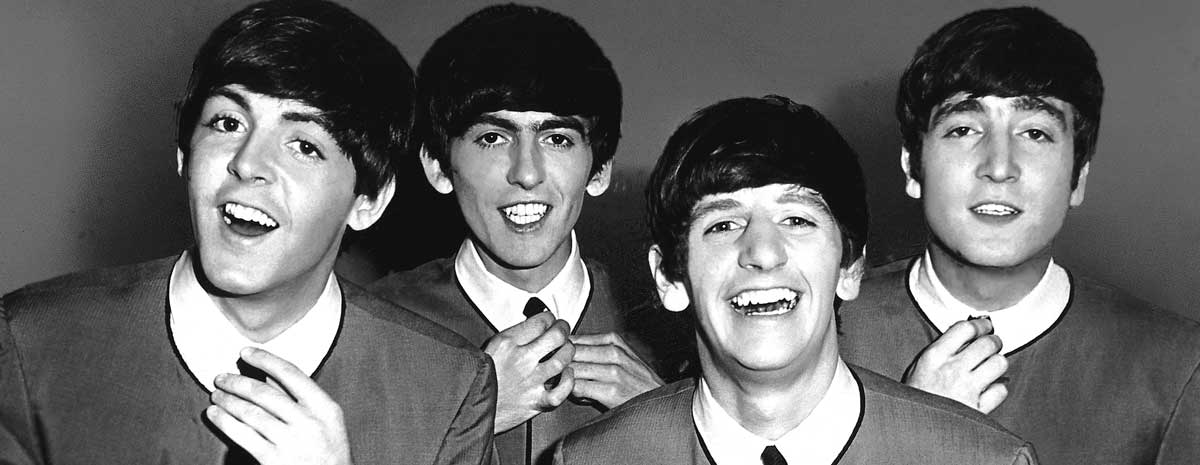Is Paul McCartney Dead?
Few would argue that James Paul McCartney is one of the most interesting and remarkable people on this planet. He was a member of one of the most popular and influential music groups of the 20th century (The Beatles), who changed the direction of popular music and had a radical effect on popular culture. Their compositions have been recorded by more artists that any other songwriter in history - "Yesterday", written by Paul, has been covered by over 2,200 recording artists. Paul McCartney is also the subject of the 20th century's most enduring and intriguing conspiracy theory - that he died in 1966 and was secretly replaced by a look-alike. All other mysterious disappearances involve a person who has gone missing, but not Paul McCartney - he is alive and well, still writing songs and still performing for his myriad of fans around the world. And that's what makes Paul McCartney so remarkable and the conspiracy theory surrounding his death so intriguing - he the only man alive for whom the basic fact that he is alive is insufficient proof that he is not dead.
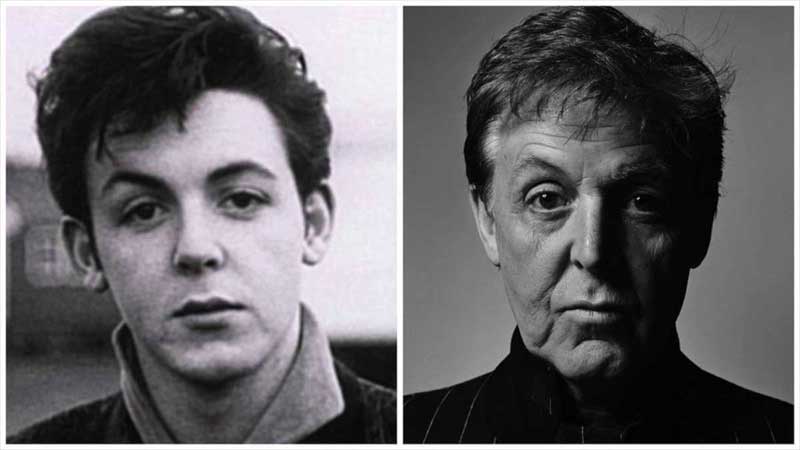
So why is this seemingly insane theory still very much alive today? If it isn't true, and logic seems to scream out that it isn't, why is the evidence so convincing, why hasn't it been disproved many times over, and why are there more people who believe it today than ever before? And why did the Beatles find it necessary to insert so many clues and pointed images into their album artwork and song lyrics that look and sound for all the world like confessions? If it was done as a joke by the band members at the expense of their record company or the record-buying public, or as a publicity stunt to revive interest in The Beatles at that time as is often suggested, then surely, 50 years on, it is now time to confess, have a laugh, and let the world move on?
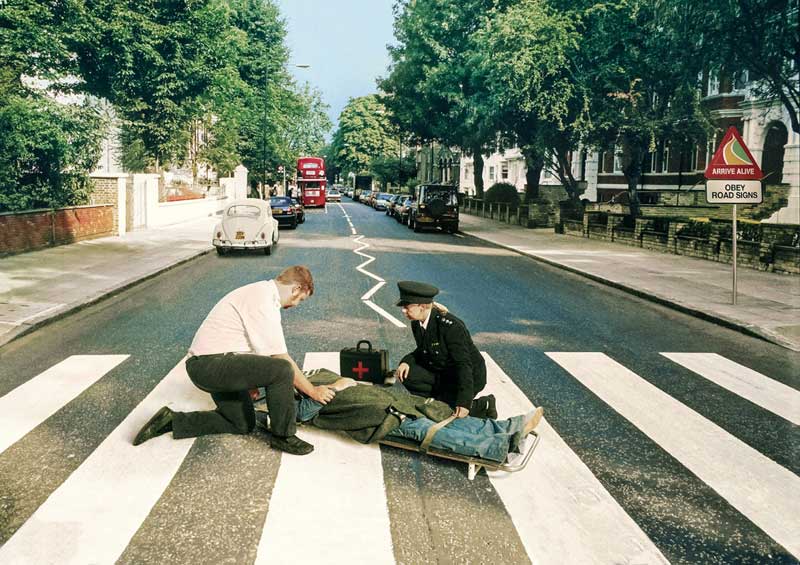
The Theory
One of the 20th century's most enduring conspiracy theories originated as a rumour circulated in London that Paul McCartney had been killed in a car crash after a traffic accident involving his car. The rumour was acknowledged and rebutted in the February 1969 issue of The Beatles Book fanzine.
The story really got traction when, on 17 September 1969, Tim Harper, an editor at the student newspaper of Drake University in Iowa (the Drake Times-Delphic) published an article titled "Is Beatle Paul McCartney Dead?" The article described a rumour that had been circulating on campus that Paul was dead. Harper got the initial story from Dart Brown, also an editor on the school paper, who claimed he heard it from British musicians who were passing through Des Moines. He had spent an evening with them, they got to talking about the music business in general, and the story came up.
The story included numerous clues from recent Beatles albums, and a hidden message, interpreted as "turn me on, dead man", that is heard when "Revolution 9" (from the White Album) is played backwards. In press reports published as early as 11 October, Beatles press officer Derek Taylor responded to the rumour saying, "Recently we've been getting a flood of inquiries asking about reports that Paul is dead. We've been getting questions like that for years, of course, but in the past few weeks we've been getting them at the office and home night and day. I'm even getting telephone calls from disc jockeys and others in the United States." There was no rebuttal - just that statement.
Abbey Road album
Within days of the article being published, John Lennon formally announced his departure to the other Beatles. Was it timed so as to upstage the band he had now quit who were releasing their eleventh studio Album - Abbey Road - on 26 September 1969, seven days after his announcement, or was he getting out before the backlash he expected to come once the conspiracy clues on the Abbey Road album had been read, interpreted, and he implicated as a key player in a cover-up? By then, the article by Tim Harper had quickly become one of the hottest topics in the media; everyone couldn't wait to get their hands on the new Beatles album to see if it contained any clues or veiled references to the "Paul Is Dead" theory - and it didn't disappoint.
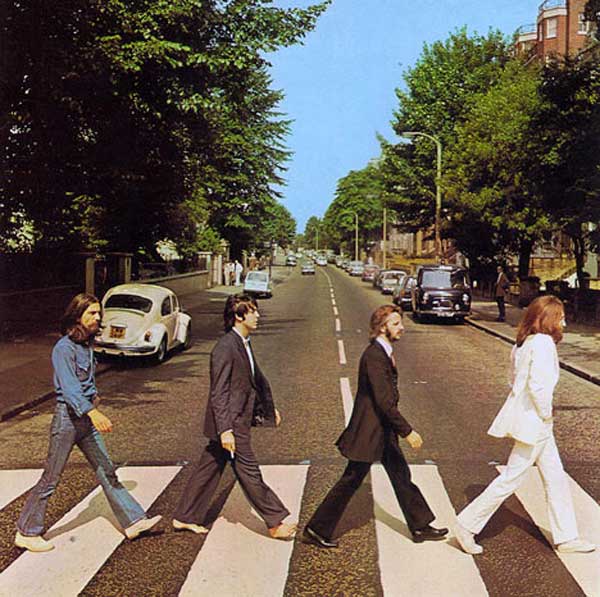
After seeing the cover artwork, and listening to the album which seemed to be full of hidden messages and symbolism, millions of fans and journalists worldwide drew one shocking conclusion: "Paul McCartney was dead", more to the point, he had died four albums ago! Whereas previous albums has contained veiled clues that something had happened to Paul McCartney, Abbey Road appeared to be making the official announcement, its release appearing to have been deliberately timed so as to validate the allegations that had been published just a few weeks before.
Iain Macmillan, a friend of John Lennon and Yoko Ono, was the photographer who orchestrated the photo shoot on the crosswalk outside Abbey Road Studios in St John's Wood, London, on Friday 8th August 1969. In four of the six photographs McCartney walked barefoot; for the other two he wore sandals. Shortly after the shoot, McCartney studied the transparencies and chose the fifth one for the album cover. The other photos that exist were taken by Linda McCartney.
Why else, the conspiracy theorists asked, would the photograph on the cover of Abbey Road depict a funeral procession, in which John, dressed in pure white symbolises the preacher or heavenly body? Ringo, dressed in full black symbolises the mourner; George, in scruffy denim jeans and shirt symbolises the grave digger and Paul, dressed in a shabby, out-dated suit and barefoot symbolises the corpse. They also point to a group of people in white coats (doctors and nurses?) standing a little way up the road looking on, who must represent the paramedics who attended the event which lead to Paul's death.
Behind the Beatles on the left side of the street is a Volkswagen Beetle with a license plate reading "28IF", suggesting the Paul would have been 28 if he were still alive. Actually Paul would have been 27 when Abbey Road was released. For those who thought that this was just too tantalizing to let pass, the theorists explained, "To the believer, 28 IF does symbolically state Paul's age - since people (especially in the Near East where Paul learned mysticism) believe we are all one year old at birth (counting the nine months of pregnancy). If you find that a bit too hard to swallow, how about that Paul was in his 28th year? The first three letters on the license place,"LMW", have been interpreted as "Linda McCartney Weeps".
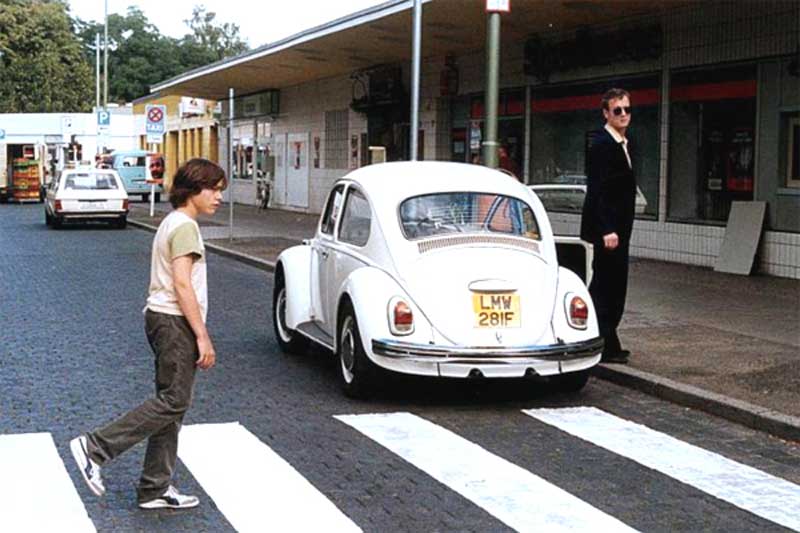
The number plate is apparently genuine, and it is a known fact that the vehicle was not deliberately placed in the photograph for the shoot. The owner of the Volkswagen, who lived in a block of flats across the road from EMI's Abbey Road Studios, claimed he always parked the vehicle there, and did not know that it would end up in the famous photograph. The blue van, a police vehicle, was driven and parked there by the policeman sent to hold up the traffic during the 10-minute photo shoot. It only appears in two of the six shots from which the final album photo was selected. The man standing on the pavement to the right of the picture is Paul Cole (c. 1911 – 13 February 2008), an American tourist unaware he had been photographed until he saw the album cover months later. After the album came out, the Volkswagen's number plate was repeatedly stolen from the car. The car was sold at auction in 1986 for £2,530 and in 2001 was on display at the Autostadt museum in Wolfsburg, Germany. Visitors to the museum say it is not on display any more, however it has been photographed on the streets of Frankfurt.
When quizzed about his lack of shoes, McCartney's response raised more questions than it answered. He said he wore no shoes because 8th August 1969 - the day of the shoot - was a hot day, but weather records show it wasn't a particularly hot day at all. And if it were a hot day, surely the fact that the roadway would have been hot to walk on would have been a good reason to keep one's shoes on, and not take them off? In recent years a number of shots from the photo shoot covering practice walks across the crosswalk have been published online, but interestingly, the shot that was eventually used for the album cover is one of only two shots in which McCartney is not wearing shoes. It is also the only one in which they are seen walking in some resemblance of order, indicating it was always inteneed to be the chosen shot.
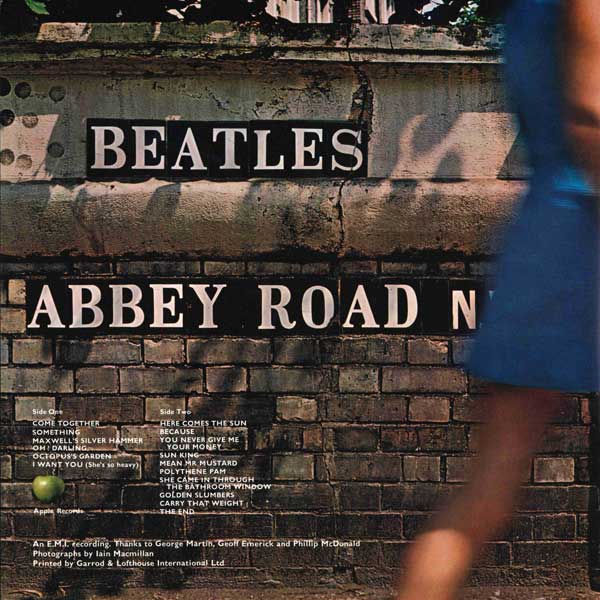
After the road-crossing photo was finished, artist Iain Macmillan set off to find a good "Abbey Road" street marker sign to use for the back cover of the album. He found it at the junction of Alexandra Road and started taking photos of the sign. Much to his chagrin, while he was busy shooting an oblivious woman in a blue dress walked right in front of his viewfinder. While reviewing his shots later that day, however, he decided that the "blue dress" photo was the most interesting of the bunch, and he ended up using it in the final composition. The sign has since been replaced, but was situated at the corner of Abbey Road and Alexandra Road. The junction no longer exists; the road was later replaced by the Abbey Road housing estate, between Boundary Road and Belsize Road.
The photo, onto which a "Beatles" sign was superposed, has a number of features that launched the conspiracy theorists into overdrive. To the left of the tiles spelling out "Beatles" are eight dots, which when connected, appear to form the numeral "3", so the back cover could be seen as reading "3 Beatles". Also, there is a crack in the "S" at the end of "Beatles". To the right of the tiles is a very odd shadow that is said to look like a skull. The woman walking by is supposedly Jane Asher, Paul's girlfriend at the time of the accident (it wasn't), who some believe was paid to keep quiet about the whole matter, though there is no evidence of this actually being the case. Also, if you look at the elbow of the woman in the photo from a distance, supposedly you should be able to see Paul McCartney's profile.
About the photo shoot >>
Unlike previous Beatles albums, many of the songs on Abbey Road seem preoccupied with death and loss. The first song - "Come Together" - which sets the album's mood has a number of odd images. This Lennon composition is written in a kind of slang, a very informal type of language used amongst friends to mock each other in an affectionate way. The song has four verses, each a cryptic description of the four band members.
Verse one is about George: Holy Roller (George was the most religious of The Beatles); Hair down to his knee (he had the longest hair of The Beatles): He Just Do What He Please (George was known as the quiet Beatle, who had no interest in the rock star lifestyle and instead went about his own business.
Verse two is about Ringo: He wear no shoe shine (Ringo always wore casual sneakers); Monkey Finger (long and hard, a reference to his drum playing fingers); Shoot Coca-Cola (Ringo drank Coke all the time); You've Go To Be Free (Ringo was the first band member to walk out on the band, saying he wanted to be free of the trappings of being a Beatle).
Verse three is about John: Bag production - the name of Lennon and Yoko's production company; Walrus gumboot (John wrote 'I Am The Walrus'), Beatle boots were a type of short gumboot; Ono sideboard (John has always had long sideboards [side burns]; His girlfriend Yoko Ono used to give his haircuts; Spinal cracker (Yoko Ono used to walk on his back to help stop the pain from a bad back); Feet down Below His Knee (someone who meditates); Hold You In His Armchair You Can Feel His Disease (Yoko used to hold him while he meditated - sat in a position shaped like an armchair - in an attempt to ease his mental anguish).
After a short musical interlude comes the last verse - about Paul, since he is the only one to have not a verse written about him thus far - which says he "got early warning (Paul has a premonition that he would die young and in a car crash)"; The term "Muddy Waters" is a blues related term that refers to death (crossing the muddy waters of the River Jordan into the Promised Land); "Getting one's mojo" is another blues term, used to describe your luck running out. A mojo filter is a synonym for an angel which comes to break a curse by carrying one across safely into the next life. The last lines declares "one and one and one is three", suggesting that there are now three Beatles instead of four, and then says the missing one who is so hard to see (perhaps because he's no longer there) is the "good looking one" (a description often applied to Paul), before inviting the remaining group members to "Come together right now over me (Paul?)." So is the first song on the album saying that Abbey Road was recorded to honour their friend one last time, before they all went their separate ways?
The last song they recorded together begins with the words "Once there was a way to get back home", inferring that the way to get back to the happy family that was The Beatles (where they belong) is no longer there, so "sleep pretty darling do not cry, and I will sing a lullaby", perhaps a reference to the song "Let It Be", which at the time was being considered for release as a single. "Boy, you're going to carry that weight ..." What weight? The weight of knowing they have deceived everyone, or maybe the weight of the loss of their best friend, Paul? All band members join in on the very last words they sang together: "And In The End The Love You Take Is Equal To The Love You Make." Maxwell's Silver Hammer, Mean Mr Mustard and The End all lend themselves to macabre interpretation. Oh Darling, I Want You (She's So Heavy) and Carry That Weight are also filled with gloom and doom. But then Here Comes The Sun and Golden Slumbers both seem to be pointing to brighter days ahead after "a long, cold, lonely winter". Co-incidence? Maybe so, maybe not.
With both a published article and a new Beatles album suggesting all is not right or as it might first seem in the world of The Beatles, people around the world began digging out their old Beatles albums in search of hidden messages in both album covers and lyrics. Those who went looking for clues and expected to find them found them; those who didn't believe there were hidden messages in the songs also looked, and found nothing. Human nature is such that we tend to see what we want to see and hear what we want to hear. In almost any argument or a point of belief, believers and non believers will often use the same piece of evidence to support their belief in an attempt to prove they are right and the other is not. Such was the case here, with many believers finding 'proof' that either clearly had nothing to do with Paul supposedly being dead, or one had to take a gigantic stretch of the imagination in order to see a link.
Within a short period of time, the rumour developed into a detailed theory that went something like this: at 5am on Wednesday 9 November 1966, McCartney stormed out of a session for the Sgt Pepper's Lonely Hearts Club Band album, got in to his Austin Healey car, and subsequently crashed and died. Somewhat improbably, McCartney was said to have been replaced by a look alike, called variously William Shears Campbell or William Sheppard. William Campbell allegedly became Billy Shears on Sgt Pepper, while William Sheppard was supposedly the inspiration behind The Continuing Story Of Bungalow Bill (actually an American named Richard Cooke III).
In fact, there is no concrete evidence that the crash ever happened. Between 6 and 19 November 1966, McCartney and his girlfriend Jane Asher were said to be on holiday, travelling through France and Kenya. However, a couple of relevant incidents did take place. Wednesday 9 November 1966 was the day that John Lennon first met Yoko Ono, so metaphorically it could be seen as the date that the Beatles, as a group, began to die.
On 26 December 1965 McCartney crashed his moped, resulting in a chipped tooth (seen in the videos for Paperback Writer and Rain) and a scar on his top lip, which he hid by growing a moustache. Additionally, on 7 January 1967 McCartney's Mini Cooper was involved in an accident on the M1 motorway outside London, as a result of which it was written off. However, the car was being driven by a Moroccan student named Mohammed Hadjij, and McCartney was not present. Hadjij was an assistant to London art gallery owner Robert Fraser. The pair turned up at McCartney's house on the evening of 7 January, and were later joined by Mick Jagger, Keith Richards, Brian Jones and antiques dealer Christopher Gibbs.
The party decided to head to Jagger's home in Hertfordshire, before moving on to Redlands, Richards' Sussex mansion (and scene of his later drugs bust). McCartney travelled with Jagger in the latter's Mini Cooper, while Hadjij drove in McCartney's Mini. The two cars became separated during the journey. Hadjij crashed McCartney's Mini and was hospitalised with injuries. The heavily customised car was highly recognisable, so rumours began circulating that McCartney had been killed in the incident.
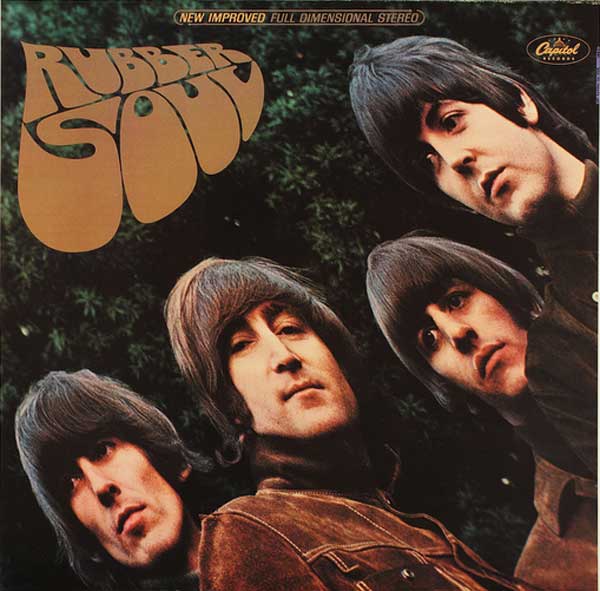
Rubber Soul album
As the Paul Is Dead theory seemed to point to Paul McCartney having been killed in a motor vehicle accident in November 1966, most fans only went looking for clues as far back as the first Beatles album to be released after that time, which was Sgt Peppers Lonely Hearts Club Band. Others who felt there was no rock solid evidence that November 1966 was the month in which Paul McCartney had died, but were convinced he was no longer with us, decided to go back further for clues, and discovered what many now believe to be the earliest of them on the Rubber Soul album (released December 1965). First up, they point to the front cover photo in which the group members form the shape of a heart, indicating that the "rubber soul" of the album's title is a fake, replacement, false soul amongst them. You have look twice and even then, stretch the imagination a little, to see the heart shape. The group members are looking down ... "into a grave?" suggest the theorists.
I've Just Seen A Face
"..had it been another day I might've looked the other way, and I'd have never been a were." (the Liverpool accent on the word 'aware' sounds like 'a were').
Girl
"..that a man must break his back to earn his day of leisure will she still believe it when he's dead .." (who, Jane Asher?)
I'm Looking through You
"..I'm looking through you, where did you go? I thought I knew you, what did I know. You don't look different but you have changed, I'm looking through you, you're not the same ... your lips are moving I can not hear, you don't sound different I've learned the game ... you were above me but not today, the only difference is you're down there ... you've changed, you've changed, you've changed.."
In My Life
"... all these places have their moments ... some are dead and some are living, in my life I love you more."
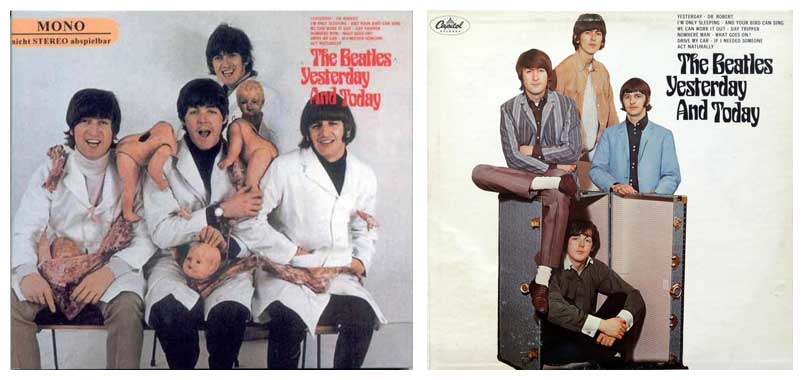
Yesterday And Today album
If you didn't find the clues on Rubber Soul convincing, you might be a little more convinced by the alleged clues on Yesterday And Today (released 1966). Initially only released in the US, Yesterday and Today included tracks from the Beatles' two most recent British LPs which had not yet been included on American albums, plus three from their up coming LP in the United Kingdom, plus two songs which were back-to-back on a single. The original Yesterday And Today album cover had a picture of the Beatles with decapitated dolls, raw meat, and loose teeth. Paul McCartney had both teeth and a doll's head (Jane Asher?) on him, indicating (so say the theorists) the places of his fatal injuries. On the "other" album cover, the Beatles are standing and sitting on a suit case. Paul McCartney is inside the case indicating that he's buried in one. Is that a picture of William Campbell, since William Campbell has this faint scar on his upper lip, which Paul McCartney is supposed to not have?
Nowhere Man
"He's a real nowhere man. ... doesn't have a point of view, knows not where he's going to ... nowhere man, you don't know what you're missing, nowhere man can you see me at all?"
Dr. Robert
"you're a new and better man ... he does everything he can, Dr. Robert".
Yesterday
Paul sings "suddenly, I'm not half the man I used to be, there's a shadow hanging over me. Yesterday came suddenly".
And Your Bird Can Sing
"you can't see me, you can't see me ... you can't hear me, you can't hear me".
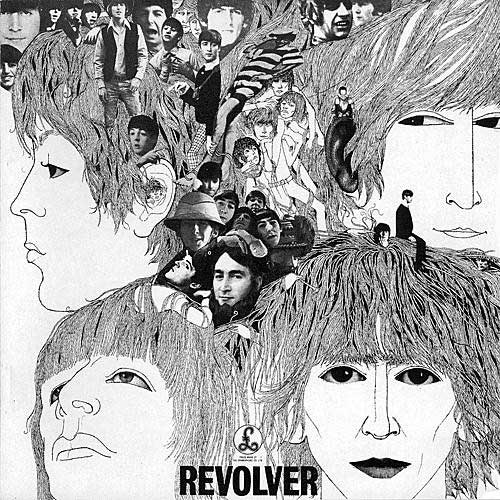
Revolver album
At first the cover of the Revolver album (released August 1966) appears to have nothing on it that points to Paul's McCartney being dead. The only clue I could find, if it is a clue at all, is the open palm above Paul McCartney's head. The hand is quite small but set against a black background that makes it obvious, and doesn't seem connected to any of the images of the various Beatles that surround it in the collage. An open palm is said to that the person below was departed from this world. This is the first of there instances on Beatles' album covers where an open palm is depicted above Paul McCartney's head (Sgt Pepper's front cover and a photo on the Magical Mystery Tour cover).
Taxman
"if you drive a car ... if you get too cold ... my advice to those who die - taxman." Songwriter George Harrison made it quite clear when he spoke about this song that it is about the high taxes imposed on high-earning celebrities like himself by the British income tax system. The lyrics seem to back that up. As for Paul, you have to stretch your imagination to think this song is about him dying in a car crash.
Eleanor Rigby
"Father McKenzie writing the words of a sermon that no one will hear ... was buried ... Father McKenzie wiping the dirt from his hands as he walks from the grave, no one was saved." According to the theorists, the name McCartney was changed to McKenzie so as not make the clue too obvious. The only problem is, Father McKenzie is not the person who died here - it was Eleanor Rigby!
Yellow Submarine
"In the land of submarines ... sky of blue, sea of green in our yellow submarines". The only connection with a burial seems to be that the sea (under which submarines can be found) and the grass (under which people are buried) are both green.
She Said She Said
"She said I know what it's like to be dead." If the she is supposed to be Jane Asher, how would she know what it's like to be dead? They are clutching at straws here. More obvious is that the Beatles' new-found obsession with death seems to have had its beginning with the album.
Got To Get You Into My Life
"I was alone I took a ride I didn't know what I would find there ... and then suddenly I see you." Who sees him, the lovely Rita, meter maid? Still clutching at straws. It's about the first time The Beatles smoked pot, surely?
Tomorrow Never Knows
"Laid down all thoughts surrendered to the void ... play(ed) the game existence to the end." Anyone who has smoked a joint knows what this song is really about.
Sgt Peppers Lonely Hearts Club Band album
True believers of the Paul Is Dead theory say Sgt Peppers Lonely Hearts Club Band is the key to unlocking the truth about Paul MCartney's death. They say it tells the story of what happened via the subliminal messages contained in the album's artwork, and in many of its songs. Abbey Road is said to be the death notice (of either Paul McCartney, or of The Beatles in their initial line-up, depending on your point of view), and Sgt Peppers is the Obituary.
Before looking at Sgt Peppers, a little background information about the making of the album will add add a little perspective to the story. In August 1966, the band announced they were permanently retiring from touring and began a three-month holiday from recording. They issued a press release: their last concert on August 29th in San Francisco should be considered their farewell concert in retrospect. The Beatles would never perform a live concert again, though did an impromptu 'gig' on the roof of the Abbey Road studios during the making of the album of the same name. The official line about Sgt Pepper's is that during a return flight to London in November 1966, Paul McCartney had an idea for a song involving an Edwardian era military band that would eventually form the impetus of the Sgt. Pepper concept. Sessions for the album began on 24 November in Abbey Road Studio Two with two compositions inspired by their youth, "Strawberry Fields Forever" and "Penny Lane", but after pressure from EMI, the songs were released as a double A-side single and were not included on the album.
In February 1967, after recording the title track, McCartney suggested that The Beatles should release an entire album that would represent a performance by the fictional Sgt. Pepper band. This alter ego group would give them the freedom to experiment musically. During the recording sessions, the band furthered the technological progression they had made with their 1966 album Revolver. Knowing they would not have to perform the tracks live, they adopted an experimental approach to composition and recording on songs such as "With a Little Help from My Friends", "Lucy in the Sky with Diamonds" and "A Day in the Life". Producer George Martin and engineer Geoff Emerick's innovative recording of the album included the liberal application of sound shaping signal processing and the use of a 40-piece orchestra performing allegoric crescendos. Recording was completed on 21 April 1967.
![]()
A few months before the Sgt Pepper's album was released, rumours began to circulate that Paul McCartney had been killed in a motor vehicle accident on 9th November 1966 after running a red light, and had been replaced in the band by a little known English guitarist. The band's decision not to tour again was said to have been made so that the real identity of the "new Paul" would not be revealed. The Beatles and everyone associated vehemently denied the rumour, which sounded so preposterous and beyond belief to anyone but the most gullible conspiracy theorist, the majority of fans were quite satisfied with the explanation they were given.
The album was released on 26 May 1967 in the United Kingdom and 2 June 1967 in the United States. The fans bought the album, listened to the songs and marvelled at the crowd of celebrities assembled for the front cover, blissfully unaware that when the song Strawberry Fields Forever declared "nothing is real it was actually saying "nothing on the album is as it seems" - that it was in fact full of hidden messages and suggestions that the majority of fans would not see or hear simply because they didn't know to look for them.
After Abbey Road was released simultaneously with the publication of the Paul Is Dead theory, fans knew exactly what to look for in the Beatles' back catalogue of music albums. As Sgt. Peppers was the first Beatles' album to be released after Paul's alleged death, believers and skeptics knew that if any pre-Abbey Road album was going to contain Paul Is Dead clues, it would be Sgt Peppers. They were right. Though it didn't jump out and scream "Paul Is Dead", the numerous very clever subliminal messages in the cover art and lyrics of the songs of the Sgt Peppers album carried were unmistakable. Whether Paul did die, or was replaced for a time to give him a break from the band, or even if it was all one big publicity stunt to keep the Beatles in the public's eye now that they were no longer a touring band, we may never know.
Sgt Pepper's: The Clues
The so-called "clues" start with the album's title - Sgt Pepper's Lonely Hearts Club Band - such a club is for people who have lost someone near and dear to their hearts, leaving them alone and in need of company. Next we have the album cover, which is overflowing with "clues". The cover artwork was designed by the British pop artists Peter Blake and Jann Haworth. The front cover, depicting the Beatles posing in costume as the Sgt. Pepper's Lonely Hearts Club Band, standing with a group of life-sized cardboard cut-outs of celebrities and historical figures. The centre of the cover depicts the Beatles standing behind a bass drum on which fairground artist Joe Ephgrave painted the words of the album's title. In front of the drum is an arrangement of flowers that spell out "Beatles". But there's an extra letter, an "o" that is mysteriously placed at the end of the name. Perhaps the band was sending a secret message: Be At Leso. Leso was the name of a Greek Island that they had supposedly bought. Were they inviting fans who had figured out the mystery to join them there?
The group were dressed in satin day-glo-coloured military-style uniforms that were manufactured by the theatrical costumer M. Berman Ltd in London. Right next to the Beatles are wax sculptures of the band members in their suits and mop top haircuts from the Beatlemania era, borrowed from Madame Tussauds. The collage surrounding the group includes 57 photographs and nine waxworks that depict a diversity of famous people, including actors, sportsmen, scientists and - at Harrison's request - the Self-Realization Fellowship gurus Mahavatar Babaji, Lahiri Mahasaya, Sri Yukteswar and Paramahansa Yogananda. The grouping included singers such as Bob Dylan and Bobby Breen; the film stars Marlon Brando, Tony Curtis, Marlene Dietrich and Marilyn Monroe; the artist Aubrey Beardsley; the boxer Sonny Liston and the footballer Albert Stubbins. Also included were the comedians Stan Laurel and Oliver Hardy (as well as comedian W.C. Fields) and the writers H. G. Wells, Oscar Wilde, Lewis Carroll and Dylan Thomas. Notably (and deliberately) absent are Jesus Christ, Adolph Hitler and Elvis Presley.
So what were the 'clues' on the front cover? First of all there is not one image of The Beatles on the front cover, but two - one of the 'new' Beatles dressed in their Lonely Hearts Club Band uniforms and another of 'the old' Beatles, borrowed from Madam Tussauds. Wax Museum, looking rather sad as they gaze down at what looks remarkably like a grave with the band's name in flowers on it. John has placed a comforting hand on Ringo's shoulder. Next to them is the famous boxer Sonny Liston, dressed up like a priest.
Above the image of 'new' Paul is a hand, which makes it look like Paul is being blessed. That hand is attached to the body of Stephen Crane. Crane is the author of The Open Boat, a story about four men on a boat. One of them dies at sea, but the remaining three decide to ignore the fact that their friend had gone and carried on as if it never happened.
The crowd in the background consists many people who died an unexpected and mysterious death (James Dean, Edgar Allan Poe, Marilyn Monroe, T.E, Lawrence {of Arabia}, artist Aubrey Beardsley, Tyrone Power, Edgar Allan Poe, Stuart Sutcliffe {the original Beatles drummer}, Sir Robert Peel), and Bob Dylan, who nearly died in a motorcycle crash. On the right of them is a red-haired doll. Paul's fiance Jane Asher had red hair. In her right hand she's holding a miniature car, a white Aston Martin. Paul drove a white Aston Martin. Close to her left hand is a pair of racing gloves, covered in blood. Shortly after Sgt. Pepper's had been released, Jane Asher appeared on BBC television, stating that after a five year relationship the marriage with Paul McCartney had been cancelled - "I haven't broken it off, but it's broken off. Finished" she declared.
The red-haired doll's T-shirt reads "Welcome the Rolling Stones." The theory states that since the Beatles had ceased to be, the Stones undisputedly were the best band in the world. This might also explain the presence of the trophy-like bust of Mick Jagger in the front row. Below the Beatles name is a small image of Shiva, a symbol for both destruction and transformation. Her right hand points towards 'old' Paul (destruction) whereas her left hand points towards 'new' Paul (transformation). In the Jewish tradition shiva also symbolises seven weeks of mourning after a loved one has died.
To the right of the Shiva is a display of yellow hyacinths in the shape of a bass guitar. It is left-handed (as is/was Paul) and has only three strings rather than the correct number - four. Theorists believe this indicates there are now only three members of the band left.
If the flowers depict a grave then the drum logically represents a tombstone. According to the album credits, the drumskin was designed by a man called Joe Ephgrave, whose last name conveniently seems to be an interconnection of 'epitaph' and 'grave'. No evidence that such a person exists has ever been found.
Why anyone would have thought to do this in the first place I don't know, but if you place a horizontal mirror halfway through the words 'Lonely Hearts' on the drum, the letters read: 1 ONE 1 X HE (upward arrow) DIE. Convert the numerals to letters and it reads 'One One One X He Die, with an arrow between 'He' and 'Die" pointing upwards to Paul. Theorists take it one step further and believe it is identifying the day Paul died: "II IX He Die" becomes "11 9 He Die", in other words "November 9th He Die". Wednesday 9 November 1966 - according to the theory - is the day Paul stormed out of a recording session, took of in his car at high speed, crashed his car and was killed. Was this supposed to represent the date on the tombstone (the drum) or are we reading into this things that aren't there?.
It has been said that, on the cover of Sgt. Pepper, Paul is holding the Cor Anglaise right handed, but in fact the real Paul was a lefty. I (the writer of this article) am both a leftie myself and a player of woodwind instruments and know that there is neither a left handed or right handed way to play them. Were I to pick up a Cor Anglaise, the way Paul is holding it is exactly how I would hold it.
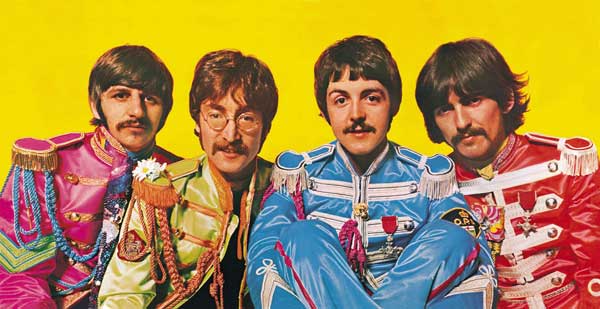
The inner gatefold depicts the four Beatles dressed in their Sgt Pepper's outfits. John, George and Ringo wear sashes on their right chest, which is common protocol for military uniforms. Instead Paul wears a badge on his left sleeve that bears the initials O.P.P (or O.P.D. as the last letter is not clear). According to George Martin the badge was a gift from a fan; the initials stand for "Ontario Provincial Police". According to the Paul Is Dead theorists, it stands for "Officially Pronounced Dead".
The album's lyrics were printed in full on the back cover, the first time this had been done on a rock LP. On it, the Beatles are all facing forward except for Paul, who has his back to the camera. Look closely and the sashes worn by John, George and Ringo are now on their left chest, which is part of the military dress code at a funeral. George is pointing towards one line of text: "Wednesday morning at five o'clock, as the day begins." If you read the lyrics the lyrics starting with "Somebody calls you, you answer quite slowly" (from Lucy), and continue to read across it says "Wednesday Morning at five o'clock as the day begins", "life flows on within you and without you" (funny how the words "without you" seems to extend from Paul's head), "you're on your own you're in the street".
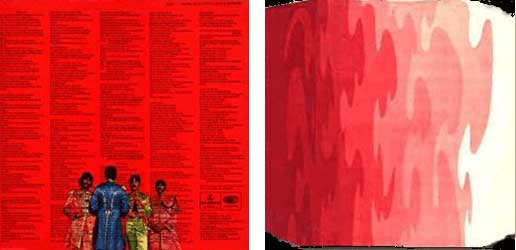
The paper sleeve that held the original vinyl record (above right) used an image of a psychedelic painting called The Fool. It made the sleeve look like it had been soaked in blood! At the bottom it's bright red but then fades into a light pink at the top. Subsequent releases of this album did not have the red-faded-into-pink colour scheme on the inner sleeve.
Sgt Pepper's Lyrics
Now let's have a look at some lyrics from songs on the Sgt Pepper's album which are said to be references to Paul's death.
Sgt. Pepper's Lonely Hearts Club Band "so let me introduce to you the one and only Billy Shears and Sgt. Pepper's lonely heart's club band". Said to be a reference to Paul McCartney's replacement in what theorists say is his introduction to Beatles fans.
Good Morning, Good Morning "Nothing to do to save his life, call his wife ... Nothing to say but what a day".
I'm fixing a hole A reference to replacing Paul? Not if you read the words in the context of the rest of the song. In a 1968 interview, McCartney said that the song Fixing A Hole' was "about the hole in the road where the rain gets in, a good old analogy - the hole in your make-up which lets the rain in and stops your mind from going where it will."
She's Leaving Home "Wednesday morning at five o'clock as the day begins ..." (the time of the fatal accident according to the theory)
Lovely Rita "... standing by a parking meter when I caught a glimpse of Rita" (took his eyes off the road!). Not a very convincing 'clue' for me.
A Day In The Life "..I saw the photograph. He blew his mind out in a car, he didn't notice that the lights had changed. A crowd of people stood and stared they'd seen his face before, nobody was really sure if he was from the house of Paul ..." John Lennon claimed the first verse of this song is about 21-year-old Tara Browne, heir to a million-pound Guinness Brewery fortune, whose light blue Lotus Elan sports car slammed into a parked van on 18th December 1966 in Redcliffe Gardens, an affluent residential street in southwest London, killing Browne instantly. Lennon stated that, while reading the 17th January 1967, issue of The Daily Mail he I noticed two stories. One was about the Guinness heir who he knew personally, who killed himself in a car, the other was about 4,000 potholes in the streets of Blackburn, Lancashire, that needed to be filled. Lennon appears to use creative license with the details of Browne's death, including his reference to being "from the House of Lords" in the official lyrics, or does he? On the recording, John does not sing 'House of Lords' but 'House of Paul', which raises the question, 'is the song really about the death of Paul, given the reference to the House of Paul, and that the event he describes matches that of Paul's crash according to the Paul Is Dead theory?'
George Harrison's sole compositional contribution to the album was a song called "Within You, Without You". The lyrics convey basic tenets of Vedanta philosophy, particularly in Harrison's reference to the concept of maya (the illusory nature of existence), in the lines "And the people who hide themselves behind a wall of illusion / Never glimpse the truth" ... "Try to realise it's all within yourself, No one else can make you change, And to see you're really only very small, And life flows on within you and without you". Was this song (and his six weeks of meditation in India with his mentor, Ravi Shankar, in 1966 which inspired it) his attempt to come to terms with a tragic event that had happened to him and the band? Such could also be said of Ringo's "With A Little Help From My Friends". To add to the mystery, Within You Without You, when played backwards, seems to be saying, "It was a fake moustache it was a fake moustache it was a fake moustache".
Although The Beatles and their press office at Apple were initially bewildered and somewhat annoyed by the Paul Is Dead story's refusal to go away, there is evidence that the group members themselves found it amusing. In an edition of Life magazine dated 7 November 1969, McCartney reassured fans that "Rumours of my death have been greatly exaggerated," paraphrasing Mark Twain. "However," he continued, "if I was dead, I'm sure I'd be the last to know." The magazine's cover featured Paul and Linda with their children, in a picture taken on their Scottish farm. The cover featured the words "The case of the 'missing' Beatle - Paul is still with us". Shortly after the issue went on sale the rumours started to decline.
Brian Wilson
By the 1980s, many Beatles fans came to believe that the "evidence" in the recordings and album covers that seem to support the "Paul Is Dead" theory was simply either a series of coincidences, or perhaps a deliberate and brilliantly executed way to keep The Beatles in the news headlines once they stopped preforming live and needed some clever marketing to keep their name in front of the record buying public. Alternate explanations abounded. Maybe Paul had not died, but rather had left The Beatles, perhaps to concentrate on writing songs, or working in the studio as Brian Wilson, founder, main songwriter and creative genius behind The Beach Boys had done.
Just as The Beatles were struggling to cope with their fame and adulation, so Brian Wilson had found himself in a similar situation. Fueled by a desire to not be left behind in the wake of was referred to as the British Invasion, he threw himself into a creative frenzy, which resulted in him heading towards a mental breakdown. Wilson had no choice but to withdraw from the band's busy concert schedule and retreat to his home, where he could focus on creatively keeping up with The Beatles. At the height of Beatlemania, Paul McCartney made it known he was also not coping with the effect the band's success was having, and it is widely rumoured that he made a number of attempts to do what Wilson had done and withdraw from the public view. Could they have created the Paul Is Dead rumour themselves so that Paul McCartney could be replaced without the public knowing? The Beatles as a group would eventually follow Wilson's lead and withdraw from public life, allowing them to develop their song writing skills.
The Bob Dylan Influence
Bob Dylan had come onto The Beatles' radar in the spring of 1964, a full year after The Freewheelin' Bob Dylan established the young songwriter as American folk music's premier voice. Once the band heard that record, during a tour of France, it had an immediate impact on them, and John in particular. "For three weeks in Paris, we didn't stop playing it," Lennon would later say. "We all went potty about Dylan." The band's early hits, though deceptively complex, were clearly intended for a teenybopper audience more interested in dancing to backbeats than listening to poetry and acoustic guitars, but all that changed after they discovered Dylan.
After hearing Freewheelin', The Beatles - and especially John Lennon - were inspired to write more mature, narrative-driven folk songs in the manner of their new hero. Lennon's artistic output after hearing Dylan suggests he was challenged and inspired by the New York troubadour's seriousness. Almost immediately, Lennon began to write more introspective and acoustic songs, first in "I'm a Loser," which was recorded in August of 1964. He finally mastered the folk form with the fully Dylan-esque "Norwegian Wood," released on 1965's Rubber Soul, in which the singer takes a detached, and somewhat stoned, look at an elusive female figure. It's no wonder Lennon sounds stoned: In August of 1964, in New York City, Dylan introduced The Beatles to cannabis. Pot would turn out to be arguably the only bigger influence than Dylan on Lennon in 1964 and 1965. Having run for years on a steady stream of booze and amphetamines, Lennon began "smoking pot for breakfast".
At the time of the motorcycle accident that forced Dylan to retire to Woodstock in 1966, Dylan's impact on John was at its strongest. With the events surrounding the accident shrouded in secrecy, the rumour mill went berserk. Fans churned out gossip that placed Dylan somewhere between dead and suffering permanent brain damage, while Dylan retreated altogether from his life as a rock star and into the bosom of a quiet living with his young family. The Beatles - and John in particular - were also feeling trapped by the fame that had engulfed them; for that reason they made the momentous decision not to ever tour again. John is known to have been fascinated by the possibility that Dylan's accident may have been either deliberate or staged (in that it really didn't happen) and had created the theory of his near-death so as to give him temporary escape from the blur of being America's now-biggest pop icon. One wonders if The Beatles didn't take a leaf out of Dylan's book and come up with the "Paul Is Dead" plot, which surfaced around that time, to give them the breathing space they desperately wanted, while keeping them in the public eye. John made no secret of the fact that they were over all the fame and adulation and yearned for some privacy.
If there is one hoaxer at the heart of this mystery, it's the college student Fred LaBour. His article in the Michigan Daily was the main vehicle for the dissemination of the rumour. But he freely admits that he invented many parts of the rumour, such as the claim that a Scottish orphan named William Campbell replaced McCartney. LaBour stated in an interview: "I made the guy up. It was originally going to be 'Glenn Campbell,' with two Ns and then I said 'that's too close, nobody will buy that,' so I made it William Campbell."
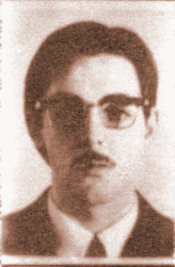
This photo is claimed to be of Billy Shears with a more recent photo of Paul McCartney superimposed on it for comparison purposes
Billy Shears
That takes care of the rumour that Paul McCartney was replaced by William Campbell, but what about Billy Shears, the other name bandied around as being Paul's replacement? It was the 1st June 1967, the day on which the Beatles released their much anticipated masterwork album, "Sgt Pepper's Lonely Hearts Club Band", that the world first heard of Billy Shears. Being the leader of Sgt Peppers' Lonely Hearts Club Band, most Beatles fans believe Billy Shears to be simply a fictitious character in the song, however there are many Paul Is Dead theorists who believe him to be Paul McCartney's real-life replacement and that the remaining Beatles used the song "Sgt Peppers' Lonely Hearts Club Band" to introduce the world to the man who had taken Paul McCartney place in the band.
Some say Billy Shears was based on William Shepherd, a composer, arranger and session musician, who played in Billy Pepper and The Pepperpots, a music group in Liverpool in 1964. The band never actually existed, the songs recorded under that name were put down by a group of studio musicians, of whom Shepherd was one, who copied the Beatles style, and even covered some of their songs. Bill Shepherd started making records in the 1950s and he was still working on production music into the 1980s. Many Paul Is Dead theorists believe that the lead singer (Billy Pepper) was in fact the man who replaced Paul McCartney. Billy Pepper and The Pepperpots no doubt inspired Paul to came up with the idea for Sgt. Pepper's Lonely Hearts Club Band, and wrote the title song with Mal Evans when they met up in Kenya in late 1966. The song, which opened the album, introduces Billy Shears and his group, Sgt Pepper's Lonely Hearts Club Band.
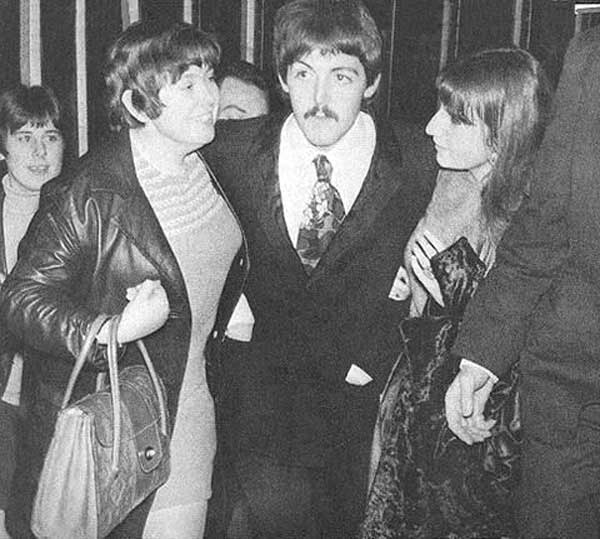
A long and thin-faced Paul on his arrival back in London after visiting Kenya in 1966. Many theorists believe this is the first photo of the 'new' Paul after the alleged switch. Few Beatles fans believed this was Paul McCartney and that whoever he was, his moustache was fake. The 2nd to last track on the Sgt Peppers album - Within You Without You - when played backwards, seems to be saying, "It was a fake moustache it was a fake moustache it was a fake moustache".
In the 1968 animated movie Yellow Submarine, John asks Jeremy "Who in the Billy Shears are you?" Additionally, in Yellow Submarine when the Beatles dress up as the band, Billy Shears is John Lennon as shown when the Beatles point at Billy Shears and John removes his disguise. Billy Shears was later mentioned in Ringo's 1973 hit "I'm the Greatest", written by John Lennon: "Yes, my name is Billy Shears / You know it has been for so many years."
The Greatest
In 1973 Beatles drummer Ringo released his third album, which was titled 'Ringo'. All the other Beatles contributed songs to it and played their respective musical instruments. John Lennon's contribution was a song called "I'm The Greatest", which was in effect a biography of Ringo's career as a drummer thus far. It is noticeable for the following lyrics;
"Yes, my name is Billy Shears,
You know it has been for so many years.
Now I'm only thirty-two;
And all I wanna do, is boogaloo"
On the Sgt Pepper's Lonely Hearts Club Band album, as Billy Shears is first introduced as the band's lead singer, Ringo begins to sing "With a Little Help From My Friends." When "I'm The Greatest" was written for him by John Lennon in 1972, Ringo was 32.
William Shears Campbell (Billy Shears) is said to have been listed in the records of English citizens until 1966, but his name disappeared from the records in that year.
Other Paul Is Dead theorists believe Billy Shears of Sgt Pepper's Lonely Hearts Club Band is in fact William Campbell, an American country guitarist who was born in Shreveport, Louisiana on September 16th, 1940. Their story says that Colonel Tom Parker, Elvis Presley's manager, discovered Campbell in 1954 when seeking songs for Elvis to record. The song "One Sided Love Affair", which Campbell had both written and recorded, was recorded by Elvis on January 30, 1956 at the RCA Studio in New York and appeared on Elvis' first album. Nicknamed the Man of 1000 Voices, because of his ability to mimic many popular singers of his day with uncanny accuracy, Campbell was put on the road by Parker in a variety of bands that toured the 'Chitlin Circuit'.
In 1965, the American teen magazine Teen Beat and Dick Clark of the TV show "American Bandstand" held a contest for Beatle look-a-likes. According to the Paul Is Dead theorists, no winners were announced, because this was done under the auspices of Brian Epstein, who was in search of Beatle stand-ins for security purposes. Colonel Tom Parker noticed a similarity in looks and immediately pitched Campbell to Epstein as a Paul McCartney stand in. Campbell began working as a security double in 1966, along with doubles for Lennon, Harrison and Starr.
A Facebook page under the name William Shears Campbell (aka Billy Shears), declares: "Billy Shears, also known as William Campbell, (born 15 November 1943) is most commonly known for replacing Paul McCartney after his death in 1966. He remains to be the recent Paul McCartney and is said to be more talented, refined, and down to earth than the first. William Campbell Shears was born into a underprivileged family of ten on November 15, 1943 in Liverpool. His parents raised him along with his 7 brothers and sisters and got little education. It wasn't until he was discovered by The Beatles and realized his incredible musical talent that he was able to do anything with his life.
The theory was summarised in 1969 by a London newspaper: "Paul McCartney got into a car accident on November 9, 1966 at 5:05. It was reported that he was immediately decapitated, ending his life. When his English rock band, The Beatles, found out about his death, they instantly planned a look alike contest which was won by a Keith Allison, who we can only presume became Billy Shears. Paul's best friend at the time, Mal Evans, took Billy on a trip to Africa, where they stayed for several months. While they were there, Billy had multiple surgeries done to his face, such as reconstruction of the nose, in order to transform into Paul McCartney. When they returned, Mal Evans went straight to Paul's old house to fire his lifelong butler, George Kelly. The man never saw Paul again."
The Mysterious Death of Mal Evans
Malcolm 'Mal' Evans (b. 27 May 1935, d. 5 January 1976) is best known as the road manager, assistant, and a friend of The Beatles. In the 10 years he spent as their road manager, Mal was blessed with a greater insight than most into the group's spectacular rise, their domination of pop in the middle years, and their painful implosion in a welter of recriminations. Throughout the decade, he kept a series of diaries and wrote an unpublished autobiography; all of this has until now remained unseen, part of an archive that went missing when Mal himself died in bizarre circumstances in 1976. All journalists who have lodged a Freedom of Information Act (FOIA) request asking for information about Mal Evans' suspicious death have been denied.
Evans was shot and killed by the police on 5 January 1976, in his rented duplex in Los Angeles just one week before he was due to deliver a book of memoirs called 'Living The Beatles' Legend' to publishers Grosset and Dunlap on 12 January 1976. Only excerpts of the book and his diaries have been published. Why the Police were at his home is not known. The attending officers claimed they mistakenly believed that the air pistol Evans was holding was a rifle. A suitcase that Evans had in his possession at the time of his death, which was supposed to contain unreleased recordings, photos and other memorabilia, was lost by the police during the investigation and became known as the lost "Mal Evans Archive". Evans was cremated on 7 January 1976 in Los Angeles. Evans' ashes were sent by post back to England, but were misplaced and lost in the postal system.
For many years, an ever-growing number of Beatles historians have regarded the Mal Evans archive as the holy grail. Last year, rumours surfaced that it had turned up in a suitcase in a Sydney street market (not true) and that it contained out takes of unreleased Beatles songs.
Mal and Paul In Kenya
1966 appears to have been a stressful and unclear year for The Beatles. Whatever the case, in reality, The Beatles seemed to be on the verge of a breakup based on reports from all media outlets. They were not getting along. They finally had time off from each other, George went to India, John filmed "How I Won The War" in Spain and Ringo visited friends. In October 1966 it was being reported The Beatles were finished, their image tarnished by John's misquoted "Bigger than Jesus" remark. Brian Epstein addressed rumours by written word, again, not on camera, not photographed, that The Beatles would never perform in concert or play appearances ever again.
Paul seemed to totally disappear during this period. Footage that was not discovered until the late 1980s filled in the gaps, revealing that McCartney and Mal Evans travelled to Kenya with colour video cameras and recorded each other on a jungle safari. The footage in Mal's camera contains the first video footage of Paul with a moustache, the footage from Paul's camera has never been found. The pictures from this trip and the time of his return to England are of a remarkably different looking Paul to the one last seen before he left. His hair is shorter, no longer parted on the left, and would flow in the opposite direction for another 15 years. His ears are a different shape, his face appears to be less rounded and his eyes look closer together and is that a mole on his cheek? He even seemed to come back a more creative, talented songwriter than before. It's amazing what a few week on safari can do to a person! But then other features remained the same - the crooked nose, the rounded chin, the eyes that are distinctly slanted at different degrees from each other, and the arched eyebrows.
At one point during this trip, according to the website Beatles Bible, Paul was hospitalized at a clinic. Referring to it, Evans said 'they did a good job in Nairobi'. A good job at what? Plastic surgery, say the conspiracy theorists. The theory goes that the new Paul had already been selected, and now it was time to swap the old Paul for the new, so Evans took him out of circulation for a while - to Kenya, no less - to have some plastic surgery and transform him into a fool-proof McCartney. In his diary, Evans suggested Jane Asher had gone with them, but she does not appear on any of the film footage and would later declare how much he had changed when she saw him again after his return from Africa. If she was there with him, surely she would have witnessed the changes first-hand and not been so surprised by it later.
Conspiracy theorists believe that on Paul and Mal's return to London, The Beatles reunited and decided the time was right for the new Paul to be ushered in and that it could be pulled off without anyone knowing by them all changing their appearance and becoming Sergeant Pepper's Lonely Hearts Club Band. Why they would do that, then pepper (excuse the pun) the album with a myriad clues about what they were doing is not clear. Paul, on the other hand, has claimed that the flight home between continents was the genesis of Sergeant Pepper's Lonely Hearts Club Band. "I thought, let's not be ourselves. Let's develop alter egos so we're not having to project an image which we know. It would be much more free. What would be really interesting would be to actually take on the personas of this different band ... I thought we can run this philosophy through the whole album: with this alter ego band, it won't be us making all that sound, it won't be the Beatles, it'll be this other band, so we'll be able to lose our identities in this". Paul quickly convinced the other Beatles of his plan, and they immediately set about spicing up their wardrobes, growing handlebar moustaches, and working deep into the winter nights to re invent the popular sound with producer George Martin.
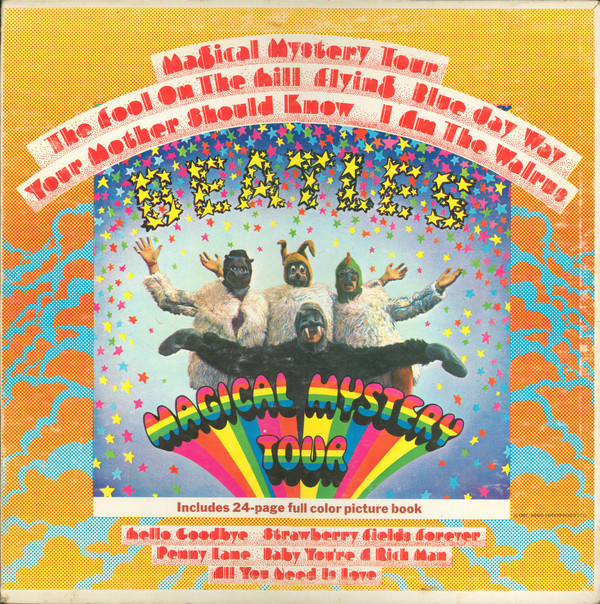
Magical Mystery Tour album
Released six months after Sgt Pepper's Lonely Hearts Club Band on 27th November 1967, Magical Mystery Tour includes the soundtrack to the 1967 film of the same name. Despite widespread media criticism of the Magical Mystery Tour film, the soundtrack was a critical and commercial success and a number one Grammy-nominated album in the US. The film, intended to be about various "ordinary" people were to travel on a coach and have unspecified "magical" adventures, was originally to follow the exploits of Sgt Pepper's band as they travelled around, but this theme ended up being extensively modified.
This album supposedly adds some new insights regarding the circumstances surrounding Paul's untimely demise. Burying and replacing are recurring themes on this album. Lennon manages to weave into more than one song he wrote that "Nothing is Real (as it seems)".
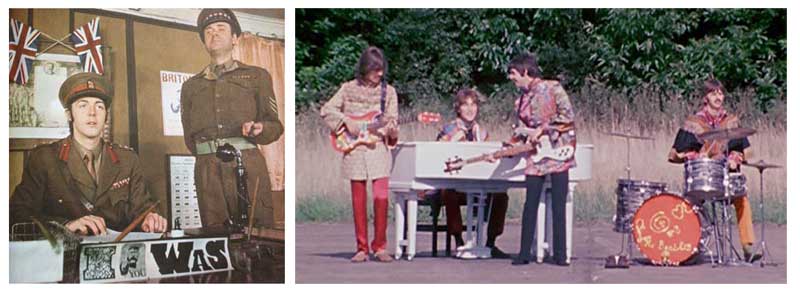
The album cover depicts Paul in a black walrus suit - all the others are wearing white. The accompanying booklet contained a photo of Paul sitting behind a desk that holds a sign which says: 'I WAS'. A third photo shows the Beatles while they are performing. Like the cover of Abbey Road, Paul is the only one who doesn't wear shoes (he is wearing black socks), which is a common metaphor to describe a dead person. The origin of that metaphor can be found in the fact that many cultures - including the British - tend to bury their dead without shoes. At the same time, Paul's shoes are included in the picture. They're right next to Ringo's drum kit. Covered in blood. Ringo's drum kit shows the words: Love The 3 Beatles - Yet another reference to 'one and one and one is three' (Come Together) like the tombstone on the Sgt. Pepper's cover? In another photo, Paul is again pictured with a hand above his head (like on the Sgt Pepper's album cover), as if he was being blessed, an action said to be a metaphor for death. This is also a recurring theme on this album.
I Am The Walrus
One of the most intriguing songs from the pens of Lennon and McCartney. John wanted to make a point about fellow musical icon Bob Dylan, who, according to John, had been "getting away with murder." He said he wanted to show his fans that he "could write that crap too." John always claimed I Am The Walrus was written deliberately as gibberish with no rhyme or reason, so he could sit back and see what weird and wonderful interpretations people would draw out of it. Paul Is Dead theorists suspect otherwise.
The song includes the line, "Sitting in an English garden, waiting for the man to come" (later changed to "van to come") - supposedly a reference to the morning of Paul's crash and John waiting at his Weybridge home for Paul, who never came? "Stupid bloody Tuesday. Man, you've been a naughty boy, you let your face grow long, I'm crying, I'm crying. I'm crying, I'm crying." These lyrics are said to be a reference to the Tuesday night of Paul's argument with his fellow band members, after which he drove off in anger on "Wednesday morning, 5am" and was killed in a car crash. Paul's replacement then grew a beard ("you let your face grow long") to cover the plastic surgery required to make him look more like Paul.
Lewis Carroll's Through the Looking Glass (one of John's favourite books when he was a youth) gave Lennon the song's title and recurring lyric, "I am the walrus." In that book, Carroll included the poem "The Walrus and the Carpenter." In it the Walrus is an imposter, someone who isn't who he claims to be. Perhaps John realised after recording the song that he was incorrect in declaring "I am the walrus". The 'new' Paul was in fact the imposter, hence his need to re-identify him in Glass Onion, a song of the Beatles' next album. The first clue that John is NOT the walrus can be found on the back cover of the Magical Mystery Tour album. Right underneath the title track a line of text has been added that states: ("No You're Not!") said Little Nicola. And if that wasn't enough, the album cover pictures Paul in a black walrus suit while the others are dressed in white.
"I am the egg man" has been interpreted as referring to Humpty Dumpty (who appears in John's beloved "Alice in Wonderland" books). Could the reference to Humpty Dumpty, who had a great fall and "couldn't be put back together again", be expressing John's realisation that combination of the death of Brian Epstein (he died 3 weeks before the song was recorded) and the replacement of Paul resulted in the Beatles being 'broken' and 'couldn't be put back together again'? Or, since according to the lyrics, The Egg Man and the Walrus were one and the same, if the Walrus was in fact Paul as John stated in Glass Onion, then it was Paul who had had a great fall and couldn't be put back together again. According to the conspiracy theory, John didn't agree to the cover up and struggled with it for the rest of his life. He saw the replacement Paul as an imposter, which might explain his sudden negative attitude towards Paul McCartney from that time on. It might also explain why the most obvious clues in the Beatles' lyrics are all in songs John wrote.
Strawberry Fields Forever
The story goes that Beatles producer George Martin had suggested that John and Paul each write a song recalling their days growing up in and around Liverpool. The result was Penny Lane by Paul and Strawberry Fields Forever by John. Penny Lane was where the two friends used to meet after school before hitting the town together. Strawberry Fields was an abandoned cemetery where John used to go and spend time alone as a child. Could these two songs have been written as an epitaph to Paul? Some Paul Is Dead theorists suggest Penny Lane is about where Paul lived and Strawberry Fields is about where he was buried, in an unmarked grave, in 1966 on a hilly place overlooking Liverpool. Mmm ... very strange (to quote Penny Lane).
To them Strawberry Fields Forever is a distraught John talking to his dead mate right before he puts him underground. He calls it a place of 'forever' (permanency) where 'nothing is real' (or as it seems). Metaphorically this implies that Strawberry Field holds a secret, unseen by the naked eye. The barely audible background message spoken by John at the end of the song "I buried Paul" seems to support this interpretation, though John always insisted he was saying "cranberry sauce." John then stumbles over his words, as if addressing himself: "Living is easy with eyes closed" (pretend nothing has happened and you'll get through this), "It's getting hard to be someone, but it all works out" (being a Beatle is harder than I expected it to be), "That is you can't, you know, tune in (you can't be a part of the reality of what's happening), but it's all right. That is, I think it's not too bad."
The Fool On The Hill
Is this a reference to Paul's body, buried on the hill of Strawberry Field? - "day after day, alone on a hill, the man with the foolish grin is keeping perfectly still". McCartney's grin was legendary and led to an appropriate nickname: the cute one, or cutie. Right before the end of the Magical Mystery Tour movie, a song is played that is not performed by the Beatles but by The Bonzo Dog Doo-Dah Band. The name of the track is "Death Cab For Cutie". The only people in the world who keep perfectly still are dead people. The Fool On The Hill is the third song John refers to in the song Glass Onion on the White Album. John sings: "I told you about the fool on the hill, I tell you man he's living there still, Looking through a glass onion.
All You Need Is Love
As I said in my intro to this album, burying and replacing seem to be its recurring themes, and nowhere is it more evident here than in this song. We often join in the chorus, heartily singing "All You Need Is Love" as though it is a anthem to love, forgetting that the verses carry the song's true, rather dark message: that anyone can be replaced. "There's nothing that you do that can't be done (by someone else?), Nothing you can sing that can't be sung (by someone else?)." The next line takes on a whole new meaning if you imagine they were being sung to someone who has just assumed the role of Paul McCartney in The Beatles! - "Nothing you (Paul McCartney's replacement) can do but you can learn how to be you (Paul McCartney) in time, It's easy". And if that's not what the song is saying, then give me a plausible alternative"? Join the album's dots and the message seems to be: since nothing is as it seems, and everyone can be replaced, the fool on the hill lies in his grave (perfectly still), while still being part of the band (living there still). And to make it happen, all you need is love, because according to the Good Book, "Love covers a multitude of sins" (1 Peter 4:8).
Why else would they share this rather odd anecdote, sugar-coated and camouflaged as a tribute to love? In spite of their bravado, the words appear to be written as a counter to the fear permeating Strawberry Field Forever that everything might not turn out alright. Could this be The Beatles telling us what they've just done - pulled off the most unbelievable part of the Paul Is Dead theory right under our noses - while convincing themselves they can actually make this work out right - all they need to achieve it is love?
Other songs that may or may not have references to or clues about Paul being dead include:
Hello Goodbye
"You Say Goodbye and I Say Hello" - A song from the 'new' Paul to the 'old' Paul, or a reflection on how John increasingly saw Paul - "You say yes, I say no, you say come and I say go, go, go"?
Baby you're A Rich Man
"How does it feel to be, One of the beautiful people? Now that you know who you are, What do you want to be?" - A song to the 'new' Paul from the other Beatles?
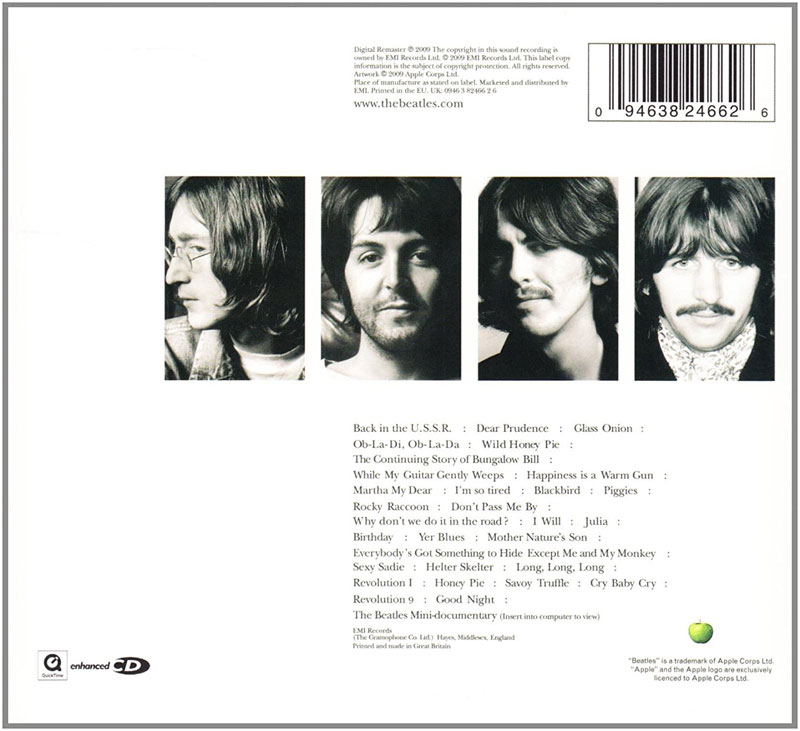
The White Album
The album titled The Beatles, also known as the White Album, was the ninth studio album by the Beatles. It was recorded between 30th May and 14th October 1968 and released on 22 November 1968. A double album, its plain white front sleeve has no graphics or text other than the band's name embossed on it, presumably so it was in direct contrast to the vivid cover artwork of the band's earlier Sgt. Pepper's Lonely Hearts Club Band. Although no singles were issued from The Beatles in Britain and the United States, the songs "Hey Jude" and "Revolution" originated from the same recording sessions and were issued on a single in August 1968. The theory states that the White Album is the album where both John and Ringo seem to give away keys, in order to better understand the many clues on previous albums.
It was segments of lyrics on this album that gave credence to the "Paul Is Dead" conspiracy. Make of these clues what you will, but never lose sight of the fact that it's possible for creative minds to read anything into anything just as it is possible for the most visible of things to go unseen but those who don't want to see. Of all the clues, the eeriest of all are the ones that can be heard on the records themselves, when the passages are played backwards. There are two main clues to Paul's death which can be heard on Beatles records when played backwards; both are on the White Album:
Revolution 9
At the very beginning of this track, repeating over and over, and heard again many times later in the cut, is the phrase "Number nine" in a very formal British voice. When played backwards, this phrase is said to sound like "Turn me on, dead man", repeated over and over. This clue is doubly eerie for believers when you remember John sang "I'd love to turn you on ..." at the end of A Day In The Life. There's also a lot of recorded conversation in this music-free track, much of which has been taken by listeners as clues to Paul's crash and death: "his voice was low and his eyes were high and his eyes were closed" and "his legs were drawn, his hands were tied, his feet were bent and his head was on fire and his glasses were insane. This was the end of his audience," and "My wings are broken and so is my hair. I'm not in the mood for wearing clothing." You can also hear a crash, a fire, sirens, and Paul screaming "Get me out."
I'm So Tired/Blackbird
There is some mumbling that sounds like John and Yoko right after the very abrupt ending of I'm So Tired and before the beginning of the next song, Blackbird. This passage has no English interpretation when played forwards. However, when played backwards, you can hear John supposedly saying, "Monsieur, monsieur, how about another one?", though some hear it as "Paul is a dead man. Miss him. Miss him. MISS HIM!." Some say this is doubly eerie, in that this backwards message again mentions the phrase "dead man", and that the very next line on the record, sung by Paul, "Blackbird singing in the dead of night", also mentions death. Blackbird is in fact about the gaining of freedom and equality by the African American people at that time, so there is no actual connection between the two songs.
The Continuing Story of Bungalow Bill
This song was recorded at the same session as I'm So Tired. Conspiracy theorists believe it is a reference to Billy Shears.
Don't Pass Me By
Ringo sings "I'm sorry that I doubted you I was so unfair, You were in a car crash and you lost your hair." This is said to be what happened to Paul - was this an apology for his part in the row Paul had with his band members before the alleged car accident?
Glass Onion
This was John Lennon's answer to those who looked for hidden meanings in The Beatles' music, a song deliberately filled with red herrings, obscure imagery and allusions to past works. Lennon liked the phrase 'glass onion', which had apt connotations of both transparency and multiple layers. A "glass onion" was said to be an English term for a see-thru coffin, but I have been unable to verify this claim. The song contains the lyric "Here's another clue for you all, the Walrus was Paul." This is in fact a throw-back to the song "I Am The Walrus" on The Beatles' Magical Mystery Tour album (1967). In that song, Lennon claims, 'I Am The Walrus', but he now clarifies who the The Walrus really is.
Everybody's Got Something to Hide Except Me and My Monkey
The monkey is believed to be Lennon's future wife, Yoko Ono. John wrote and sang this song - could it be a reference to him being the only Beatle to write "clues" about Paul being dead into his lyrics?
Ob-La-Di, Ob-La-Da
The clue is said to be the song title itself - Ob-La-Di, Ob-La-Da (Life Goes On), though what Desmond and Molly have to do with Paul's alleged death and finding a replacement for him is not explained.
Birthday
"They say it's your birthday, it's my birthday too, yeah" - a greeting from one Paul McCartney to the other, or just a person sending birthday greetings to someone with whom they share their birthday?
Mother Nature's Son
The line "Find me in my field of grass" in Mother Nature's Son was said to be as a reference to a cemetery. Written primarily by Paul McCartney (credited to Lennon-McCartney), it was inspired by a lecture given by the Maharishi Mahesh Yogi while the Beatles were in India. The same lecture inspired Lennon's unreleased song "Child of Nature", the tune of which he later re-used for "Jealous Guy".
The Beatles And The Rumour
In 1969, Life magazine sent a crew to Scotland to track Paul down and take a photo of him. Paul had taken refuge from the Beatles' legal battles at his farm in Scotland and he was not at all happy to be confronted by reporters. When the crew appeared on his farm, Paul became angry and doused the photographer with a bucket of water as he took pictures. The reporters quickly left and Paul, realizing that the photos would cast him in a negative light, followed after them. In exchange for the film of his outburst, Paul agreed to let the Life crew do an interview. The resulting article, which went into some detail about the supposed clues to Paul's "death", appeared as the cover story for the November 7, 1969, issue.
Paul McCartney's first solo album after leaving the Beatles was called RAM. When asked about the name, Paul said it came to him when he was on his farm in Scotland and saw lots of sheep and rams. Doesn't that sound plausible? "Paul Is Dead" theorists read a much deeper meaning into the name. Since Paul's real name is supposedly Billy Shears, when one asks what Billy Shears, the answer is a Ram. Others point to the fact that the album's name is all capitals, not upper and lower case as one might expect. RAM is the name of a program in the intelligence world that stands for "Radical Appearance Modification". Britain's MI6 used to the term to describe people in their witness protection program who have undergone an identity change to protect them. Some Paul Is Dead theorists who follow this line say the original Paul McCartney did not die but underwent Radical Appearance Modification and was replaced; he was then given a new identity, allowing him to live the rest of his life in anonymity, or to re-surface later and resume his former role as a rock musician (as the leader of Wings?). Some believe the Paul McCartney interviewed by Life magazine was the original Paul now living as a farmer in Scotland, other believe it was his replacement.
An alternate theory is that Paul did die, and his death was covered up by MI6, perhaps to avoid the mass hysteria that might erupt were his death to have been made public. Either way, they believe it was Billy Shears who underwent "Radical Appearance Modification" so that he could take over the role of James Paul McCartney in The Beatles.
If one does not believe that Paul McCartney actually died in 1966, the question as to the rumour of his death being a hoax remains. There are far too many 'clues' to be found on album covers and in the lyrics - over 100 in total - for it be coincidence, especially since many are so blatantly obvious. Paul wouldn't be depicted as the odd man out on four consecutive album covers for no reason. That The Beatles are standing graveside with a left hand bass guitar sitting on top of the grave complete with only three of its four strings intact wouldn't have been depicted that way by accident. Nor would Paul McCartney just happen to be standing with his back to the camera when they did the photo shoot for the Sgt Peppers album with no one thinking to ask him to turn around and face the camera. So was an elaborate hoax engineered either by Capitol Records or by the Beatles themselves, and if so, why? Both Capitol Records and the Beatles definitely had a financial motive to devise such a scheme.
The "Paul Is Dead" rumour led to massive sales of all the Beatles' albums, so if was simply a ploy to keep the Beatles in the public eye and sell more records, it was a raging success. People were actually buying multiple copies of the albums in order to play them backwards to listen for hidden messages. Capitol denies having started the rumour, and it does seem far-fetched to think that record executives would have been imaginative enough to dream up and pull off such a hoax. The same could not be said of The Fab Four. Either way, once the rumour took hold, Capitol did little to discourage it. More suspicion is usually focused on The Beatles themselves because they had the creativity to pull off such a thing, and were well-known for their mischievous sense of humour.
McCartney parodied the rumours with the title and cover or his 1993 album Paul Is Live. The artwork was based on the Abbey Road cover photograph; instead of the 28IF number plate, a car shows 51 IS instead. To reinforce the cycle of life, he is pictured being dragged across the famous zebra crossing by one of the offspring of his sheepdog Martha.
John's perspective on the rumour
In his revealing Rolling Stone interview in 1970, John was asked about the death story. He responded in a typically forthright fashion: "I don't know where that started, that was barmy. I don't know, you know as much about it as me... No, that was bullshit, the whole thing was made up. We never went for anything like that. We put tit-tit-tit in Girl. It would be things like a beat missing or something like that, see if anyone noticed - I know we used to have a few things, but nothing that could be interpreted like that."
Lennon referred to it in 1971's How Do You Sleep?, his vitriolic attack on McCartney from the Imagine album. The song contains the lines: "Those freaks was right when they said you was dead, the one mistake you made was in your head". When John Lennon was inducted into the Rock N Roll Hall of Fame, Ringo and George spoke. George slipped up and said "We loved John and loved Paul too!" Note he said 'Loved" (past tense).
Irrespective of what Lennon said in interviews, he is the one who wrote the songs that support the notion of Paul being dead. The most obvious "clues" are all in the songs he wrote, with little or no clues popping up in the songs written by Paul and George.
Saint Paul
Intriguingly, one piece of evidence does link The Beatles to the start of the rumour. In February 1968, an American singer named Terry Knight (1943-2004) flew from New York to London hoping to sign a recording contract with Apple Records who were at that time scouting for new talent. Knight went to the Saville Row headquarters of Apple Music, hoping that they'd sign him as a solo artist or staff producer. He had lunch with Paul and Ringo. At some point during his visit he attended a Beatles' White Album recording session which degenerated into a terrible argument. At its height, Ringo said he was quitting the band and walked out. Knight, who may well have been the first person outside of the band's inner circle to be a witness to the fact that all was not right in Beatle Land, claimed he flew back to New York empty-handed, shocked by what he had seen. Out of either disappointment or spite, he wrote the words of a song about the impending break-up of the Beatles on the flight home. Knight's publishing house, Storybook Music, published it, Knight recorded it and it was quickly released as a "Good Knight Production" single through Capitol Records. The song - Saint Paul - which predicted the fall of The Beatles and their publishing company, and that the breakdown would be blamed on Paul for having a different vision to the other Beatles, includes the cryptic lines:
"You knew it all along, Something had gone wrong,
They couldn't hear your song of sadness in the air,
While they were crying out beware ... you and Sgt Pepper saw the writing on the wall ...
And if tomorrow comes, you know, they'll all hear St Paul say: I read the news today, oh boy.
You say you want to live your life to the future, They said you've got dues to pay today ...
And if tomorrow comes, you know, they'll all hear St. Paul say: Let me take you down ...
You had a different view, You didn't listen, St. Paul!
Once The Beatles heard the song, they obtained a "Ceased and Desist" order and the single was immediately withdrawn on the grounds that Knight had incorporated lines of various Beatles' songs into his recording. Knight returned to London and paid Paul McCartney a visit. In May 1969 the song was re-released, but this time by MacLen Music, McCartney and Lennon's publishing company that had been created in 1963 to publish their own music. Saint Paul became the only non-Lennon/McCartney composition in their inventory. All of Knight's other songs were published by Storybook Music. Knight went on to manage and mentor Grand Funk Railroad.
The enigma of a virtually-unknown musician's original song being published by the Beatles may be a greater mystery than the "Paul Is Dead" rumour itself. Why would they publish such a song about their own impending demise? The Beatles could have easily paid Knight off and in so doing banished the song into obscurity. One can't help wondering if they deliberately engineered this song to be the catalyst for the most widely circulated death-hoax rumour in history, as it got the whole "Paul Is Dead" ball rolling. The tune made its way up the charts to No. 114 in late June that year and was quickly forgotten until a few months later, when it was picked up by radio stations as a tribute to "the late" Paul McCartney as soon as the "Paul Is Dead" rumours began circulating.
Some theorists believed Knight's song contained several clues to back up their assertions that the Beatles had had a major disagreement, that Paul had been removed from the band and secretly replaced, and that the other band members played a part in it, and judging by its content, it is easy to see why they thought that. Other believe that, as a result of what he saw, Knight was given this song, paid to record it and to keep his mouth shut about what he saw. It is also possible that it was commissioned to be written and that Knight's story about writing it on his flight home is fiction. That would explain why it was published by MacLen. Knight would never talk about the song. Theorists think Knight may have been threatened with some dire consequences if he ever talked about it or what he knew. Knight was murdered on 1st November 2004, so whatever he knew about Paul McCartney died with him.
One theorist, who owns copies of both the old and new version of the song, has pointed out that what was taken off the first recording is what Knight placed in the last minute or the first version. The theorist, named Christie, says MacLen allowed him to continue using Hey Jude as background music for the song, but what they had him remove were a series of repeated words that could be mistaken for Ob-La-Di. Slowed down from 45rpm to 33 rpm, she says it sounds more like "Obediah D". Christie interprets this as being a biblical reference to the 4th verse (D is the fourth letter) of the Book of Obediah, which says, "Though you exalt yourself as the eagle, and though you take your place among the stars, I will bring you down, says the Lord." In the context of the song's lyrics - "And if tomorrow comes, you know, they'll all hear St. Paul say: Let me take you down, down, down, down..." she reads this as saying that God will take them down for what they have done to Paul. This all sounds very much like the condemnation heaped on John Lennon around that time for saying The Beatles were now bigger than Jesus.
More ...
Paul's 'Admission' That It Was a Hoax
While on a vacation in New Orleans in 2004, Paul McCartney is reported to have let his guard down and said that the "Paul is dead" clues were deliberately planted by the group as part of an elaborate scheme dating back to the summer of 1966. it ended up being an April Fools "interview" that many thought was legitimate. According to report, McCartney said that the plan was formulated by manager Brian Epstein. "Brian dropped by the studio to hear the playback of our latest single, 'Paperback Writer.' He didn't like it one bit. 'Not a love song,' he said. He was concerned that the press and our fans wouldn't get it. He told us, 'People want love songs. They won't spend money for a song about a novel writer. You boys are gonna blow it with this one.' But by this time, we were running the show, not Brian. We insisted that 'Paperback Writer' would be our next single and told him that the song represented the new direction our song writing was going in."
Brian came up with a plan to help sell albums in the event he was right about the dangerous new direction the group was heading in. Paul explained, "When I told him our future albums would be dominated by songs about interesting people and places, his heart sank. He didn't think people would buy such albums and came up with this great idea to push sales in the event he was right and we were wrong. The idea was that we would plant clues in our songs and album covers that one of us had died in a car wreck. If after a few albums, our records weren't selling well, we'd leak out word about the clues and let our fans and the press take over. People would buy the albums to see and hear the clues. We thought, 'Wow, that's an incredible idea!'. We realized it would be great fun to have all those clues sitting there undiscovered until people started going nuts looking for them all."
The Beatles press agent Tony Barrow also thought the plan was brilliant. "Nothing re-energizes a singer's career like his death. Do you really think Buddy Holly would have been so famous had he not died in that plane crash? Same for Richie Valens and certainly that one-hit wonder Big Bopper with his 'Chantilly Lace' song. And how about Otis Redding? He never had a number one hit till after he died in a plane crash. The fact that Brian came up with a car crash shows his genius. Airplane crashes were the norm."
Ringo and George were not willing to "die" for the good of the group, Paul recalled, "John wanted to be the dead Beatle, but this time I didn't cave in to John like I did on the songwriter credits. I thought it should be me because I was the second most popular Beatle. Brian agreed it should be me because he was worried that once the clues became known, people might think it was a John practical joke if John was supposedly dead. But me ... Brian thought, 'No one would suspect Paul for rigging his own death. They think John's the clever one.' So I got to die."
More ...
The above report was pened by Bruce Spizer, a well-know Beatles author and historian who has not only written a series of critically acclaimed books on the group’s American records, but also has been known to tell a tall tale or two for April Fool’s Day. This article originally appeared in the April 1, 2004 issue of Goldmine Magazine.
In the following clip taken from The Anthology series, Ringo talks about nobody wanting to bunk with him in the early days of the band. According to the video, George diverts the story to Paul being "the new fella" in the band and being made to bunk with Ringo. There was never a time when Paul was the new guy, as he formed the band with John long before George and Ringo became band members. In the clip, Paul even refers to himself in the third person as if he is talking about someone else, but this all hangs on whether George is looking at Paul or Ringo when he refers to one of them as "the new fella". The video's narrator speaks as though it is definitely Paul who George is looking at, but given that the camera pans from one band member to another as each speaks, who George was addressing is not clear. What George says indicates he is addressing Ringo, but the slight turn of George's head as he speaks could well be taken as George shifting his gaze from Ringo to Paul when he begins to talk about "the new fella".
In another video clip in which Paul McCartney spoke about the time he set up the band Wings, he says it was a new experience for him as "I joined The Beatles as an already setup affair." John Lennon and Paul McCartney founded The Beatles together, so the Beatles were not an "already setup affair" when he joined. In yet another clip, Sir Paul is said to have spoken of having had jobs in factories, and even indicates details of his work with his hands, as he talks of how his life could have been different, though no biography mentions this at all for Paul in Liverpool. Whilst I have found many online references to this interview, I have not yet been able find a copy of it to view. If such an interview exists, there is in fact no room for that in his life, for Paul was in school and playing in the developing band with John Lennon through his teens. There is no record of him having left school and got a job working for someone. Could Sir Paul mentioning a bit of his own life as a young person, but not as Paul?
Other 'Evidence'
In spite of what Paul, his fellow Beatles and their promoters said, there were plenty of both fans and conspiracy theorists who bought the evidence they saw and heard embedded into The Beatles' later albums rather than the official explanations, and many remain unconvinced to this day that the present Paul McCartney is not who he says he is. They point to things like a DNA test McCartney once took in a paternity case that created more confusion and suspicion of his true identity, not less. In 1962, when the Beatles were living in Hamburg, Germany and still unknown to most people, Paul McCartney had a brief affair with a German woman named Erika Wohlers. She gave birth to a daughter, Bettina, in December 1962, which was during the time the Beatles were starting to become famous. The Beatles soon left Germany, and McCartney abandoned Erica.
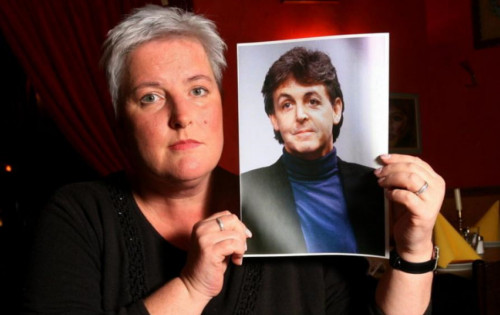
Bettina Hubers
Around 1967 McCartney agreed to pay 30,000 Deutsches marks to support Bettina, but he was not admitting to being her father, even though her German birth certificate identifies him as her father. Once Bettina became an adult, she asked a German court to have McCartney recognize her as his natural daughter. McCartney had to submit to a DNA test, and the test showed that he was not her father. Interestingly, based on an autograph signed by McCartney, together with some photos taken for the occasion, Bettina accused the person who took that DNA test of being a substitute for Paul, not the real Paul McCartney. The autograph, for instance, was signed by somebody right-handed (Paul is left-handed). At the time she claimed to have had no knowledge of the "Paul Is Dead" rumour.
Erika Wohlers tried unsuccessfully to obtain a DNA comparison between Paul and his brother. She insisted she was 100% faithful for those 2 years, and asked if she wasn't, would she go public to prove her promiscuity?
On 16th January 1980 Paul was arrested at Tokyo International Airport when Customs officers found two plastic bags in his suitcases containing 219 grams of marijuana (approximately 7.7 ounces). On January 18 the Tokyo District Court permitted the public prosecutor's office to detain McCartney for up to ten days for questioning. It took 14 days before his release without charge was negotiated. Why was Paul McCartney held so long? A local newspaper story at the time said the delay was because his fingerprints didn't match the ones that were taken during his visit to Japan with The Beatles in 1966. Did the Japanese know it was a fake Paul and didn't know what to do about it? He was released on January 25 and deported with no charges filed. Upon returning home, he made the decision to break up his band, Wings. The reason given was his reluctance to tour again in the wake of John Lennon's murder.
I recently watched the 9/11 tribute concert documentary. In it Paul McCartney is backstage talking about people coming together for the tragedy when he makes the comment about World War II and that he was born after the war. Did he really forget that he was born in June 1942?
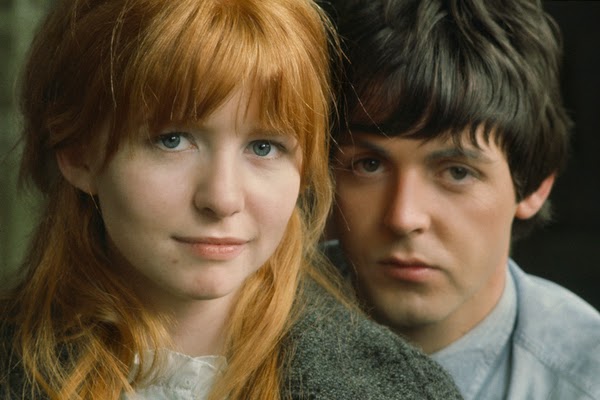
Jane Asher and Paul
After returning to London from a five-month acting tour of the United States in May 1967, Paul McCartney's girlfriend Jane Asher claims she found McCartney to be completely different, confiding in Hunter Davies, who was the Beatles' only authorized biographer, that McCartney had "changed so much. He was on LSD, which I hadn't shared. I was jealous of all the spiritual experiences he'd had with John. There were fifteen people dropping in all day long. The house had changed and was full of stuff I didn't know about." Though Asher was engaged to Paul she has never spoken about her relationship with McCartney since the breakup. Being asked about it irritates her, as she stated in 2004: "I've been happily married for 30-something years. It's insulting." As noted perviously, shortly after Sgt. Pepper's had been released, Jane appeared on BBC television, stating that her five year relationship the marriage with Paul McCartney had been cancelled - "I haven't broken it off, but it's broken off. Finished" she declared. She has never given an explanation as to what she meant by this comment.
Paul the Leftie
One of the big areas of controversy in the Paul is Dead conspiracy relates to which is his dominant hand - is he a leftie or a rightie? Paul is one of the most famous left-handed guitarists in the world and, in fact, in a 1963 interview he is quoted as saying the following about it: "The only thing I couldn't cure myself of was being left-handed. I do everything with my left hand, and no matter how I try I can't change the habit. I just seem to do everything back to front. I used to even write backwards. Every time the schoolmasters would look at my handwriting they would throw swinging fits."
Paul McCartney playing a guitar right-handed in India on 'The Anthology'. The guitar is a left-handed guitar being played upside down as the scratchboard is at the top.
Why is it then that in spite of this, there are a number of occurrences after 1966 - never before - where Paul was filmed and photographed picking up and/or holding objects with his right hand? Being a leftie myself, my dominant hand performs such tasks, i.e. my left, and because Paul has also admitted to being the same, then his dominant left hand should be the one seen doing such things. But there are a number of times after 1966 where he is shown in Beatle material doing something that is right-handed. These include: On page 4 of the Magical Mystery Tour booklet Paul is holding his wand in his right hand. At the beginning of the 'Fool on the Hill' segment in the Magical Mystery Tour movie Paul takes the cigarette out of his mouth using his right hand (as he does on the cover of Abbey Road, though some lefties can and do hold cigarettes in both hands with no apparent difficulty). In the Magical Mystery Tour movie, as the cast are getting drunk and singing on the bus Paul is shown holding his beer bottle in his right hand. In the booklet for "Let It Be... Naked", a photo is shown of Paul holding a cup of tea in his right hand.
On the Anthology 7 video, as Paul is discussing the song 'I Will' clips are shown of their time in India. One particular scene can be found approximately 50 minutes in where Paul is talking about writing the song. This particular song is playing as the scenes are shown, and Paul is playing right-handed here. Paul's replacement - William Campbell - was said to be a right-handed guitar player who had to learn how to play left-handed for public appearances. Maybe, since he was in remote India he felt he could let his guard down and play with his more comfortable stance? It's a matter of public record that in 1967 Paul put his guitar on as if he were going to play it right-handed and the other three Beatles panicked right on stage. Right in the middle of "Strawberry Fields" in the Anthology DVD series, Paul McCartney is seen playing the violin right-handed. Also in the video for 'Real Love' after the George guitar solo, you see McCartney playing right handed!
As a left handed musician this one is very hard to swallow. Learning to play with both hands is totally starting from scratch with muscle memory. It's a huge amount of work, no serious guitar or bassist is really known to play both left and right handed. It's an incredible feat if Paul suddenly went from right to left. It takes years to get to be able to play with your dominant hand. People don't just up and switch. It would take months and months at least of steady hard work, and for what purpose would Paul do this, except perhaps to perpetuate the suspicion that Paul Is Dead?
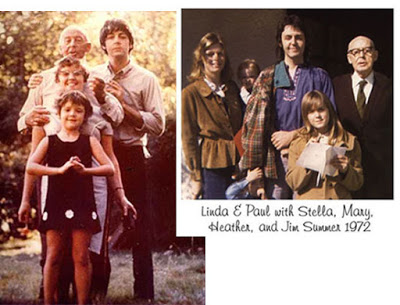
In 1965, Paul was a little bit taller than his father. By 1972 he is a lot taller.
Spotting The Differences
Many differences are quite openly acknowledged in Paul (the figure as the same man always) from before late 1966 and after. Some are to do with style of music, some to do with voice, some to do with relatively big changes in overall attitudes to drugs, some to do with looks. These things are usually explained as coming from "the era" of "psychedelia": that as the band moved from incipient forms of artistic experimentation with music to match drug experience, in late 1965 through 1966. The 1967 Sgt. Pepper's Lonely Hearts Club Band album was the turning point, with radical changes in voice techniques, styles of dress, and so on. Other changes in Paul himself are chalked up with age or, in the case of one biographer, who utterly discounts the idea that Paul was different as a person after 1966, chalked up to a "lobotomy", jokingly, because of some of the truly insipid songs by Sir Paul McCartney after the Beatles.
But though some changes in the man have come with age, and some changes in the band's attitude in the 1960s happened from the era, are all of the changes categorically due to those things? The conspiracy theorists think not. Most fans of the early Beatles remember that Paul McCartney had very rich dark hazel coloured eyes. Amazingly, one of the first appearances in 1966 after the supposed switch and from then onwards, crystal clear close-ups show he now has green eyes. Now technically, it is possible for a person's eye colour to change by a minor degree, due to exposure to certain chemicals and metals, as well as film and lighting, but even if this was the case, it is not known to happen to this degree and in this short a time.
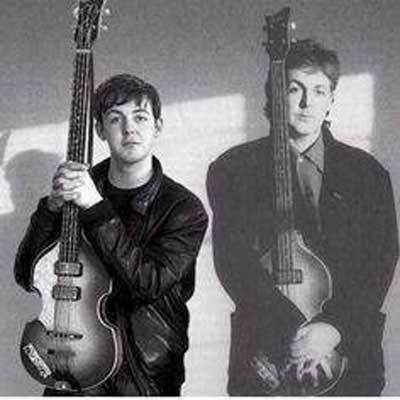
A photo of Paul taken in 1962, when superimposed on a similar photo taken in the 1980s, in which Paul is holding a similar Hofner bass guitar. The guitar is the same height but the older Paul is much taller than the younger Paul, though it must be pointed out that it is not the same guitar (the RH guitar has only one pick-up). According to the Hofner catalogue, however, the two guitars are the same size. The width (ear to ear) and height (chin to hairline) of their heads are identical, so the two photos are in the correct proportion to each other.
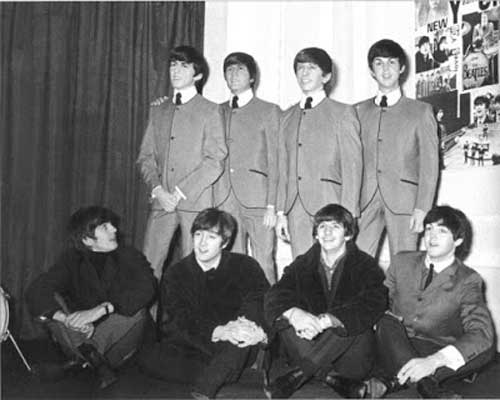
The wax figures of the Beatles made by Madame Tussauds. Wax Museum show the band members' heights. Paul is a bit taller than Ringo, but there does not seem to be a great height disparity between the others. Madame Tussauds. figures are "based on hundreds of precise measurements ... more than 250 precise measurements of the body... with callipers and cloth tape measures." If one compares the heights of the Beatles over the course of their history, the relative height of the band members to each other does not fluctuate, with the exception of Paul. After 1966, Paul is always considerably taller than George and John. Compare their heights then with the Sgt Pepper's cover shots (above) and Paul stands proportionately much taller than the other Beatles.
From other photos in the Sgt Pepper's shoot, they all seem to be wearing the same kind of costume shoes to match their outfits, in fact they actually rented these costumes from a costume shop, so it is unlikely that different sized heels are to blame. When we view the wax figures of the Beatles in the cover photo, Paul's figure appears the same height as John and George. The "present day" image of the group in the same photo, wearing their Sgt Pepper's outfits, shows Paul much taller than the rest.
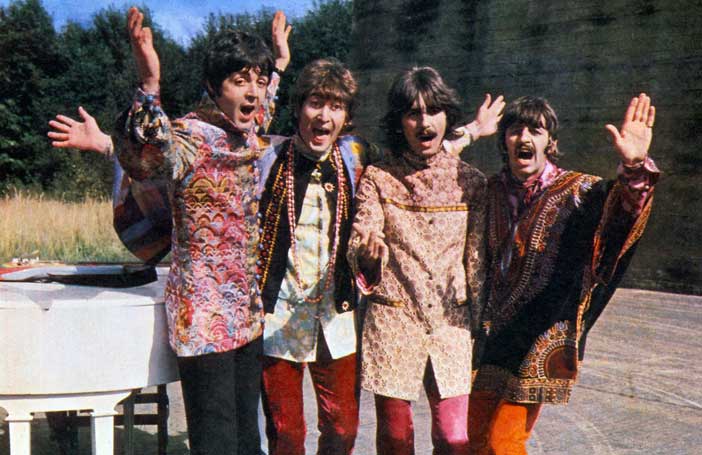
Video sequence from "I Am The Walrus"
We again see this difference in height in the film Magical Mystery Tour. In publicity stills, we see the boys standing side by side, again wearing matching shoes; Paul is on the left end and clearly stands taller than John and George. His shoulders in particular are considerably higher. You can also just make out the infamous "black carnation" clue; the others wear red carnations, while "Paul" is singled out by wearing a black carnation. In a video sequence from "I Am The Walrus", Paul also appears taller than the others.
How likely is it that a double could stand in for someone like Paul McCartney and perform on stage, fooling everyone into believing they were seeing and hearing the original artist rather than an impersonator? A well-known Dolly Parton impersonator performed at the grand opening of Dollywood, and fooled an audience full of fans and family when she walked onto the stage singing "Here You Come Again". Had Dolly herself not joined the lady on stage, and announced who she was, the thousands of people would witnessed the event would have had no doubt whatsoever that they had seen Dolly perform, and not a "double".
Forensic evidence

Paul McCartney from press conference in Memphis, Tennessee, USA, August 19, 1966 (left), and the Paul in an interview outside EMI studios, London, England, in December 1966 (right). Are these different enough and for the right reasons that they show different people? If so, how could it have happened, and if so, what would explain more similar photographs? Or is this difference only from lens distortion and facial expression and lighting?
Then there are these two photographs of McCartney, taken four months apart, which are often used as evidence that they are of two different people. The left photo was taken in August 1966, and the right photo was taken in December 1966. How can Paul look so different in just five months? His nose appears longer and his head is a different shape. Both figures have cheekbones, but the relative lack of high and wide upper cheek relative to the eye sockets seems to be different. The mouth widths at rest seems also to be different. Sometimes Sir Paul McCartney does show a narrow mouth, but it often is not when at rest. That sort of thing cannot be changed in plastic surgery; impressions have to be carefully measured, it is true, and compared with other issues, to determine if the item in question is significant or not.
The cover-story for the July 15 2009 issue of Wired Italia, the Italian edition of the US magazine Wired, describes the analysis of the McCartney conspiracy theory conducted by two Italians, Gabriella Carlesi and Francesco Gavazzeni. Their purpose for analysing this conspiracy theory was to provide indisputable, scientific evidence that would put an end to the persistent rumours that Paul McCartney had died in a car accident in 1966. However, the results of their analysis surprised them. Instead of putting an end to the rumours, their analysis provides scientific evidence that the Paul McCartney of today may not be the same man as the Paul McCartney prior to 1966. Once they started to realize what their findings were showing, they had to delay their release and double check everything to make sure they had not made a mistake. They had careers and reputations to protect, but in the end they were confident enough to present their findings, knowing the repercussions would be a burden.
Gabriella Carlesi is a forensic pathologist who specializes in identification of people through craniometry (i.e. comparison of certain features of the skull) and forensic odontology (i.e. analysis of the teeth), while Francesco Gavazzeni is a specialist in computer analyses. By putting their talents together, they were able to use a computer to obtain high precision measurements of Paul McCartney's skull from various photos of his face. Certain features of our skull, teeth, and ears are extremely effective for identifying us; some of them cannot currently be modified by surgery. In fact, in Germany, the identification of the shape of the right ear has the same legal value of that of a DNA test or fingerprints detection.
The two researchers began their analysis by obtaining high quality 'before' and 'after' photos of Paul McCartney. Gavazzeni complained that some photos taken before 1966 were not properly dated (sometimes different photo agencies would have different dates for the same photo), and that some of the best photos were the property of photographers who were very reluctant to release them. However, they eventually found two good quality photos dated before 1966 and two after 1967.
Different photos of a human face, in order to be compared, have to be re-sized to match the same scale; to do this, one feature of the face must be used as a scaling factor. These two researchers opted for the distance between the pupils. In other words, the photos were scaled so that the distance between the pupils was exactly the same for all of them. Once photos of a person have been scaled so that the eyes have identical locations, then if you lay the photos on top of each other, certain features will match exactly, such as the shape of the skull. The skin and hair may be very different, but the skulls should be identical.
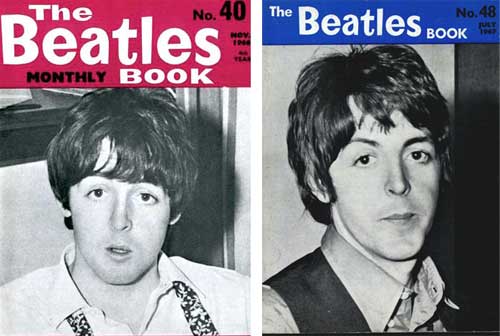
Paul in 1966 (left) and 1967 (right)
Both of the photos taken prior to 1966 matched one another perfectly, and both of the photos taken after 1967 matched one another perfectly. However, the researchers were shocked to discover that the photos prior to 1966 did not match the photos taken after 1967. For example, the frontal curvature of the jaw was different (i.e. the curve going from one ear to the other and passing through the chin, which you see when looking directly into a face) and the jaw arc was also different (i.e. the curve of the jaw that you would see if looking downward at the head from above).
Gavazzeni noticed a common feature of Paul's early photos that is not seen in his recent photos: a dark area shadowing the external corner of the left eye. That area now shows something half-way between a scar and something that resembles skin that was stretched as a consequence of cosmetic surgery, or, as Gavazzeni suggests, of an imperfect cosmetic surgery. Photos show that the earlier Paul's head is more oblong than present day Paul's head. Carlesi pointed out that the line separating Paul's lips is much wider, to the point that it was obvious even when Paul grew a moustache, perhaps in an attempt to hide that detail. Lips can be inflated and increased in volume, but the wideness of their separating line can be altered only to a small extent. More interesting is the position, relative to the skull, of the point where the nose detaches from the face, because it can not modified by surgery. According to Carlesi, these points for Paul are considerably different. Some features of the ear are also useful for identification purposes because these as well are not modifiable through surgery. Carlesi and Gavazzeni determined that the ears in later photos differed significantly.
Some features of the human body can be altered, such the position and slope of teeth (dental braces do this for millions of people). Carlesi noticed that the teeth configurations in the photographs do not match, but in a very curious way. In earlier shots, his upper right canine tooth is pushed out of its normal position because there is not enough room in his jaw for all of his teeth to fit properly. In later photos, that same canine tooth is also crooked, but there is plenty of room in his jaw for all of his teeth. Since no other teeth are pushing against the crooked tooth, how did that tooth become crooked? Carlesi concludes that the crooked tooth in later photos was the result of a dental operation to simulate the crooked tooth in Paul's mouth. Carlesi was even more amazed at the difference in the shape of the palate. It was so narrow in early photos that some teeth were misaligned (such as the canine tooth mentioned above), but in later photos the palate was so wide that the front teeth did not rotate with respect to their axis, or tilt, as was happening for Paul, with the only exception of that upper right canine (mentioned above) which leans outward.
Carlesi points out that altering the shape of a person's palate, although possible in the 1960s, would have required a traumatic surgical operation (the breaking of a bone. She doesn't say which bone, but seems to refer to the hard palate), and it would have required the wearing of fixed dental braces for more than a year. Therefore, if the conspiracy theories are false i.e., if the Paul McCartney that we see today with a large palate is the original Paul McCartney with a small palate - then Paul went through some very serious dental surgeries, and he would have suffered for a long time, and it would have had an effect on his voice. The more logical conclusion is that the Paul McCartney of today went through a much simpler dental operation to make one of his teeth crooked.
Voiceprint comparisons
Voiceprint identification can be defined as a combination of both aural (listening) and spectrographic (instrumental) comparison of one or more known voices with an unknown voice for the purpose of identification or elimination. Developed by Bell Laboratories in the late 1940s for military intelligence purposes, the modern-day forensic utilization of the technique did not start until the late 1960s following its adoption by the Michigan State Police. From 1967 until the present, more than 5,000 law enforcement related voice identification cases have been processed by certified voiceprint examiners.
Voice identification has been used in a variety of criminal cases, including murder, rape, extortion, drug smuggling, wagering-gambling investigations, political corruption, money-laundering, tax evasion, burglary, bomb threats, terrorist activities and organized crime activities. It is part of a larger forensic role known as acoustic analyses, which involves tape filtering and enhancement, tape authentication, gunshot acoustics, reconstruction of conversations and the analysis of any other questioned acoustic event.
In 1969, Dr. Henry M. Truby of the University of Miami used samples from three Beatles songs sung by Paul McCartney (Yesterday, Penny Lane, and Hey Jude) and produced three very different sonagrams. If the voice prints do not match up, then the songs were sung by different people. After 20 hours of running experiments on dozens of Beatles records dating from the early 1960's, the professor said there is "reasonable doubt" that three voices popularly attributed to McCartney are produced by the same set of vocal chords. Truby said experiments on a sound spectograph machine indicated there were six different voices on the records he tested. Three were clearly identified as those of Beatles John Lennon, George Harrison, and Ringo Starr. The three others sound "roughly" like the same person, the professor said, but the spectograph - which makes sound "fingerprints" - show a different authorship. "I cannot conclude that the same voice appears in these early late passages," said Truby, who has spent 20 years in scientific audio studies.
Then again, if the Beatles recordings do feature two different voices, the magician's studio at Abbey Road could use a variety of techniques to disguise a voice to make it sound like another to the human ear. They often used techniques such as automatic double tracking (ADT) and speeding up and slowing down the tapes on Beatles' recording, though not necessarily to distort the voice. The vocals on "You Never Give Me Your Money" have clearly been tampered with to change the vocal tone.
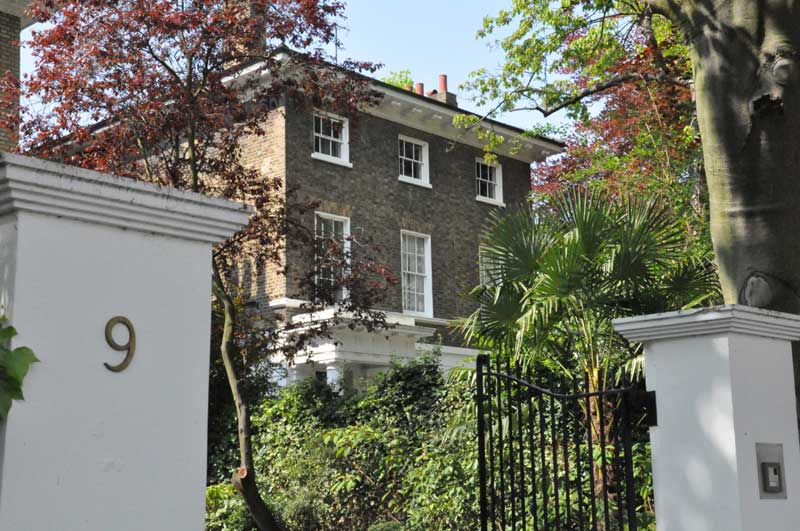
7 Cavendish Avenue, St Johns Wood, London, from the gateway of Paul McCartney's next door neighbour at No. 9
The Next Door Neighbour
One of the many "Paul Is Dead" Facebook pages contains this post by a Jane-Marie:
This is the first time that I am going to speak publicly about something that I have been so afraid to speak about, and I do it now feeling more confident after Ringo's declaration. I was living in 1978 and 1979 at Cavendish Avenue, St Johns Wood, London. I was 23 years old by then, and because I never lived in England before, I never heard about those rumours, but I always had the image of Paul McCartney very clear in my mind. One day I was arriving to my home and suddenly I could see a man coming towards me, and before I could open the gate of my house he approached me and asked: "Are you my new neighbour?" and I just said to him: "Yes; if you live in this same street". Then he smiled at me and started to go around me in circles and looking straight into my eyes in a way that I found very strange and funny at the same time ... it was as if he was expecting me to have some kind of reaction ... and I was so confused by that behaviour. Then he told me: "Nice to meet you I hope to see you again soon", and he went down the street at the time that I entered my home. I had the feeling that he reminded me of somebody I knew, but I could not figure it out. Then I explained to someone in the family what happened to me ... and I was told that "I just had met Paul McCartney".
I said "No, it cannot be, he was not at all like Paul McCartney: if he was Paul I would recognize him at once, as has happened with all the famous people that I crossed in London. Paul is shorter, and his face is round and his eyes are very dark ... and the man I just talked to, is taller, has a large face and his eyes are green-grey ... he cannot be Paul, but okay, he has some look alike". The family were smiling in complicity, but they did not say to me anything else. I was excited and incredulous at the same time, but I was sure that the man I just met that morning in front home was not Paul. After that, things and experiences started to happen, regarding Paul and Linda, and also the implication of a letter of John Lennon sent to my house (not to Paul's house) and later other circumstances that happened which I could not understand why in that time, back in the 70s, when I was Paul's neighbour.
"Then, later I went back to my original country and later I came back again to live in London and here for the second time, is when I learnt all about the possible death of Paul, and in a sudden all the answers came to me very clearly regarding all the doubts in those years when I was the neighbour of 'Paul'. I knew I was right even then ... that man could not be at all the real Paul McCartney. I would have recognized him if he was the Beatle ... and then all that happened after that .. now everything makes sense in the context of pure reality. Even John was killed because of that secret plot ... that fan who murdered him was only used by 'them' as the 'straw man' , because John wanted to talk about all the truth in 1978, when he sent to my house that letter for being given to Paul ... and then etc, etc. ... because I am even frightened to speak in here ... but I am also so relieved to take all this out of my chest ... Paul Is Dead, and the man living in 7 Cavendish who was my neighbour in the 70s is not the real Paul ... I know that for sure. I had him in front of me, speaking with me, staring into my eyes waiting for me to react. I know now for sure that he had to be so disappointed, when he could see for himself that a girl of that time of The Beatles, could not recognize him as the real Paul McCartney. Only I have to say in his favour, that I really think that he is even more talented than Paul McCartney was himself ... but he is not Paul the Beatle. Rest In Peace, Paul ... I wish he could have been my neighbour by then ... but no, I was neighbour to someone else who is impersonating him."

Heather Mills
In November 2007, after her divorce from Paul McCartney, Heather Mills said to Billy Bush on US news and entertainment programme Access Hollywood: "Something so awful happened. Someone I'd loved for a long time I found out had betrayed me immensely. And I don't mean infidelity or anything like that. Like, beyond belief. People don't want to know what the truth is because they could never ever handle it. They would be too devastated."
She then addressed Paul directly: "You know why I've left you. Protect me and I will say nothing." Billy Bush went on to ask: "Knowing what you now know about Paul, would you have married him in the first place?" Heather replied firmly and simply: "Never."
What could this awful thing be? A betrayal that isn't infidelity, something the public just wouldn't be able to handle if it came out. Could it be that Heather learned that her husband was literally not the man she thought he was? That in fact he was a Paul McCartney look alike who'd been hired by the remaining Beatles to become the new Paul - and had been impersonating him for more than 4 decades?
Heather Mills' interview (some called it a meltdown) with Fiona Phillips on British news and entertainment show GMTV is probably her most infamous. It took place a day prior to the Access Hollywood interview and featured tears, melodrama and a good deal of ranting and raving. But again Heather stated that she was harbouring a terrible secret for Paul, a secret that had pushed her to the edge, a secret she was legally bound to keep quiet about. She said: "I have protected my husband. I know everything, and I know the truth."
Particularly intriguing and sinister is Heather's suggestion that she had been threatened into silence by the architects of a conspiracy: "I have a box of evidence that is going to a certain person should anything happen to me. So if you top me off, it's still gonna go to that certain person, and the truth will come out. There is such a fear from a certain party of the truth coming out."
Heather Mills' 2007 interviews certainly breathed new life into the 'Paul is Dead' conspiracy theory. But while her comments are certainly curious and ominous, the mainstream view at the time was that the 'truth' Heather Mills was referring to was that Paul physically abused her during their marriage, a 'truth' that most people today have considerable doubts about. And if he did get violent during the disintegration of their marriage, did it revolve around threats were she to reveal his 'secret'? A High Court judge at their divorce proceedings accused Heather of having a "warped perception" and of giving evidence that was "inconsistent and inaccurate" and "less than candid". So was she straight-out lying about everything in those interviews? Is she nothing more than an attention-seeking fantasist as the High Court judge was suggesting or does she harbour a secret that has left her fearful for her life should it ever to be revealed?
The Last Word

Perhaps it is appropriate that Ringo Starr, one of the two surviving Beatles, has the last word. In a discussion about who should be picked to film a Comic Special appeal in Africa in May 2011, Ringo declared, "You all know that the only person round this table who can go is me. I was in the biggest rock 'n' roll band in the history of music ... I am the last remaining Beatle." That immediately raised the subject of Paul McCartney. "We are as close as we want to be," he said, laughing, in a somewhat pointed summation of their at times strained relationship. "We're the only two remaining Beatles, although he likes to think he's the only one." After pausing in thought, he continued, "But I think it's people on the outside who perceive Paul as thinking he's the only one left. Actually, it's me. I am the last remaining Beatle." He paused again, then added, "There is an element of truth in it," perhaps in the knowledge that the best jokes are based on truth. But Ringo has a habit of saying audacious things with a poker face, so you can't tell if he's being funny or telling it like it is.
Was he saying that he was in fact the last remaining member of the original Fab Four or the one who has stayed closest to the original spirit of the Beatles? After all he did continue to play drums for The Beatles for many years after their break-up, performing on numerous solo albums of all the other Beatles. One thing is for sure, after all this time, he - and anyone else who really knows what happened - is not going to just tell us if Paul was replaced, but leave us to read between the lines and come to our own conclusions.

